














Part of my duties here at RBC Publishing is to help out on one of our sister titles for the hospitality and licensed on trade
This week I attended my first demonstration at the ripe old age of 64! It took place outside the Houses of Parliament and then moved on to the Treasury
Attending this demonstration makes one realise of course, that the Chancellor is under an enor mous amount of pressure to balance the books Every sector either wants more money or reduced taxation
However with respect to adult social care we face a different situation as this Chancellor Jeremy Hunt called for an annual increase in the adult social budget of £7 billion when chairman of the select health committee
On October 22, 2020 he said: “In this report we look at one element of that namely the funding pressures and conclude that the government must use the spending review to raise the annual adult social care budg et by £7bn by the end of the parliament as the starting point for a wider series of reforms Whilst that is a significant sum it would not increase access or quality of care ”
Unprecedented though these times are the government had broken a 2019 manifesto promise to “fix social care” and implement changes that were confirmed just a year ago They included raising the amount of assets a person can have before getting state funding for social care from £23 250 to £100 000 as well as capping lifetime care costs at £86 000

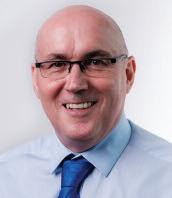
To my mind the delay in the reform of social care and the implemen tation of the care cap is simply an indication of a can yet again being kicked further down the road
Given recent history who knows who is going to be Chancellor this time next year?
Of course any additional funding is welcome The sector has been in a perilous situation for far too long However increases to the national liv ing wage increases in energy prices and current inflationary pressures interest rate rises all these add to additional unbudgeted social care providers costs, so I suspect this additional funding will very quickly be eaten away with precious little impact
In recent weeks we urged care homes to send in and share your activi ties on Remembrance Sunday inviting you to share residents experi ences and any events undertaken to commemorate British service members who have died in wars and other military conflicts since the onset of World War I
And you did not disappoint us and while we could not fit them all in our printed issue please do go online and visit our digital issue where we have a wonderful array of stories! www thecareruk com/carerdigital124

And soon we will be returning to the festive season so once again we urge you to send in stories of your festive celebrations (See page 5 for our Christmas hamper competition) Please do continue to share your sto ries of awards birthday celebrations fundraising sports events singing and dancing you name it we are receiving them at the moment all feelgood stories which highlight the dedication commitment and devo tion staff display in every day improving the well being of the residents! I can always be contacted at editor@thecareruk com
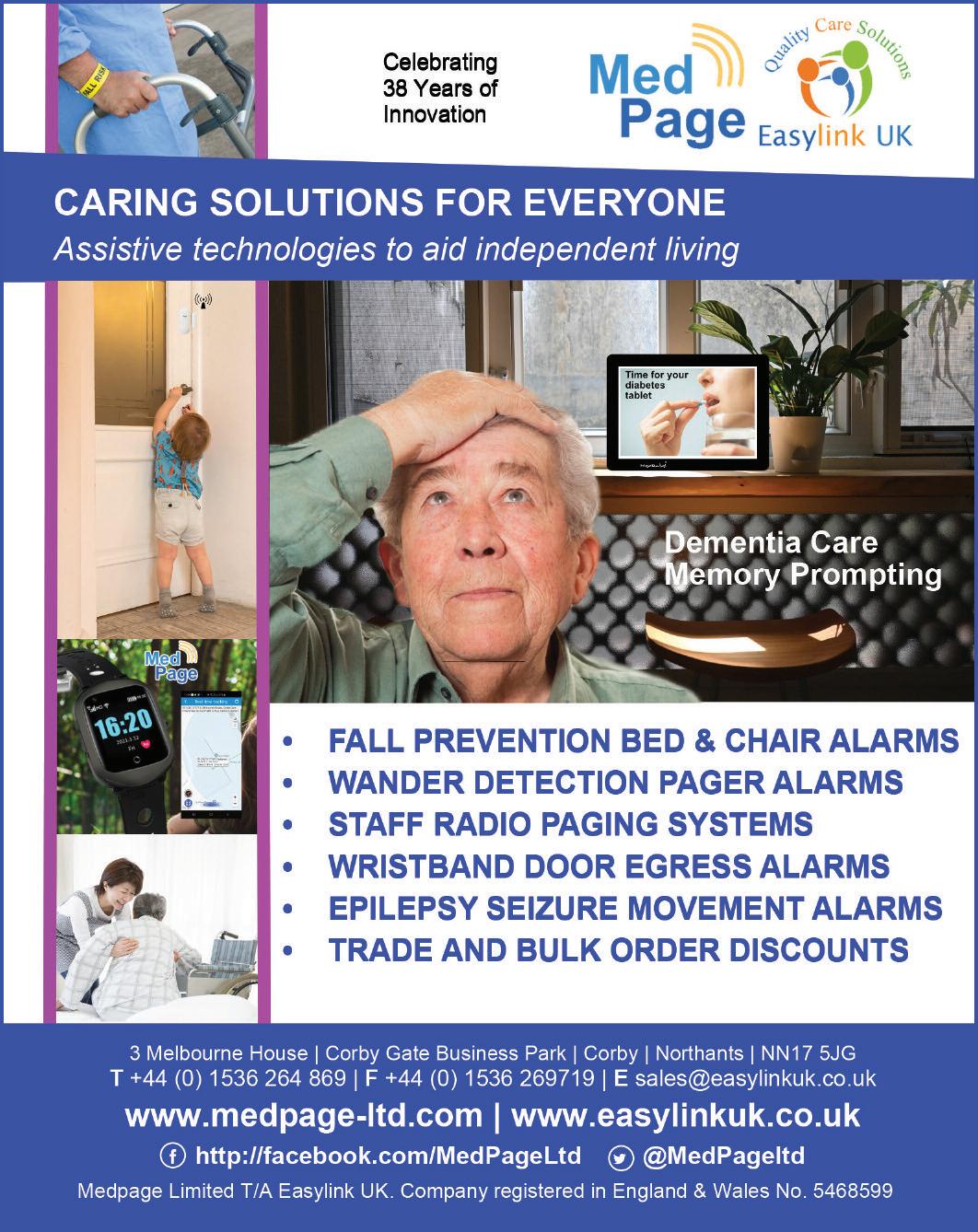 Published by
Published by
This will be combined with funding freed up by delaying the imple mentation of the Dilnot Reforms, which would cap the amount any per son in England would have to pay towards social care at £86 000 and ‘more council tax flexibilities’
Speaking in the Commons Mr Hunt said: I have also listened to extensive representations about the challenges facing the social care sector It did a heroic job looking after children disabled adults and older people during the pandemic ”
Its 1 6 million employees work incredibly hard But even outside the pandemic, the increasing number of over 80s is putting massive pres sure on their services
“I also heard the very real concerns from local authorities about their ability to deliver the Dilnot reforms immediately so will delay the implementation of this important reform for two years allocating the funding to allow local authorities to provide more care packages ”
How we look after our most vulnerable citizens is not just a practical issue but speaks to our values as a society so today’s increase in fund ing will allow the social care system to help deliver an estimated 200 000 more care packages over the next two years the biggest increase under any government of any colour in history
Professor Vic Rayner OBE CEO of the NCF said: “I fear that for the remainder of this parliament the ambition for reform of social care has been put on the back burner There is little in this budget that talks to the vision of developing care with people at its heart Social care is about people, not packages and whilst discharge is vital, great social care changes lives and matters to us all and it is imperative that over the next two years the government keeps its commitment to develop care that is fit for the future
“It is right that our workforce deserves the increase in the National Living Wage (NLW) and much more in terms of reward and recogni tion However, to realise this, the government must set out how it intends to fund councils to meet the full costs of the NLW increase for all of the care workforce As having made a decision to delay the cap on care costs and the introduction of a more generous means test it would seem outside of the realms of compassion and fairness to require those funding their own care to continue to have to cross sub sidise public sector care provision
“Fundamentally care and support services are so much more than the ‘discharge arm’ of the NHS The government must start to recog nise this If the integration of health and care is to mean anything to the people who need care and support we need a reframing of the pri orities ”
Whilst this is a welcome recognition of the importance of social care much more is needed to put the sector on a sustainable long term footing, support people where and when they need it and enable providers to reward the care workforce in the way they deserve MEASURES “FAR

Sam Monaghan, Chief Executive of Methodist Homes (MHA) the country s largest charitable care provider said: A year ago we hoped that the plans announced to reform the social care sector would lead to improved funding and make services fit for the future Today the Chancellor has put a pause on those plans with his announcement that reforms are being delayed
“This is a Chancellor who, while Chair of the Health and Social Care Select Committee said the sector needed the ongoing injection of £7 billion pounds per year of additional investment but who today has made the smallest steps in terms of turning his words into actions
“Any additional money for social care is welcomed, but this is so far from the billions we need if we are to fund the sector properly support the NHS in discharges from hospital ‘FALLS WELL SHORT OF WHAT IS NEEDED’
Mike Padgham Chair of the Independent Care Group (ICG) which represents care homes and home care providers, said: “All extra fund ing is good but without sounding churlish the sums announced today (November 17) fall well short of what is needed
“The extra money is welcome, but will it increase staff pay to tackle the 165 000 vacancies in social care staff? No Will it help us make inroads into the 1 6m who can t get care? Very little if any Mr Padgham said he was “not sure putting that pressure on to local council tax payers is the answer” and “councils will only be able to raise council tax by so much and that won t be enough to tackle the prob lems social care is facing on the ground
He called it “most disappointing” the government’s decision to delay the cap of social care costs for a further two years ensuring people will continue to face catastrophic care costs and continue to sell their homes to pay for care breaking the government’s 2019 manifesto pledge “and stem the tide of those leaving care work ”
Director of Operations at PJ care, Lisa Andrew said “As a Real Living Wage employer one of a small majority in the health and social care sector, PJ Care supports the increase to the National Living Wage to £10 42 especially in these times of financial hardship for care staff
“However, the implementation of this uplift is not without its chal lenges With the current inflated costs of essential utility provision ris ing food and consumable costs, compounded with below inflation fee increases from the government the pressures on the sector are increasing exponentially ”
A review by the government of the current fees payable to the Health and Social Care sector would assist providers in meeting this well deserved rise The onus cannot be solely left with providers to plug the gap This expectation will simply lead to many providers being unable to meet this requirement forcing closures of homes and ulti mately increased pressure on the NHS, as there will be fewer dis charge placements for those most in need to go to This will culminate in further pressures on bed availability for the acutely ill in the hospi tals
The County Councils Network (CCN) welcomed the Chancellor’s decision to delay the reform of social care services Cllr Tim Oliver Chairman of the County Councils Network, said: “The County Councils Network has been clear that its member councils face unsustainable pressures: with inflation and demand adding £3 5bn to their costs, we have called on the government to postpone the forthcoming adult social care reforms so funding earmarked for those changes can be reinvested in into stabilising care services that are creaking at the seams, as well as further support for vital services
Today s confirmation that these reforms for adult social care will be delayed is a brave decision but completely the right one We under stand that many will be disappointed but postponing these reforms and reinvesting significant additional funding into frontline care servic es is strongly welcomed and will protect the most vulnerable in our society as well as buy councils vital time to stabilise the care system This will go a long way to enable us to address existing pressures commission more care packages and ensure that the reforms are a success on day one of their introduction in 2025 The government must ensure that as much of this additional funding as possible is distributed directly to councils who will work tirelessly with their health partners to speed up hospital discharge ”
I want to tell you a story of an extraordinary young man His name was Oliver The tale I am about to share with you was originally written by his parents Paula and Tom and if you want to read it in full please visit Oliver s Campaign website Let me begin by telling you about Oliver Oliver was not an aspiring captain of industry a political leader a writer or a painter Nor was he a musician, an actor, or a celebrity with a large social media following Nevertheless, Oliver McGowan was exceptional Oliver was remarkable because despite developing hemiplegia epilepsy a mild learning disability and later on a diagnosis of high functioning autism at an early age he saw the best in every thing and everyone He never let his disabilities stunt his ambitions Against the odds Oliver passed his GCSE and BTEC examinations He went to college His academic talents were matched by his sporting achievements He was an extremely accomplished athlete But perhaps one of Oliver’s most rewarding moments came not in the classroom, or on the sports field, but in the sterile surroundings of his neurologist’s office It was there that Oliver was given the uplifting news that he would be able to live a normal independent life with only a little support required
MEDICATION
But tragically after suffering from a series of partial facial seizures he was admitted to hospital A raft of tests were carried out and Oliver was sent home However bizarrely the doctors prescribed antidepres sants when he wasn t depressed The side effects of the medication led to Oliver suffering more seizures and when he returned to hospital a few months later the doctors elected to prescribe anti psychotic medication despite Oliver showing no signs of mental illness or psy chosis
At this point Oliver’s parents became very worried They believed that his doctors had failed to take into account the fact that he was autistic and were therefore in fact prescribing entirely the wrong med ication It was only when a bed in the psychiatric ward could not be found that the doctors decided to stop administering the anti psychotic medication Once the drugs were out of Oliver’s system, his mood greatly improved and he had far fewer seizures
SEIZURES
However a further bout of seizures meant another hospital stay where Oliver was again prescribed anti psychotic medication despite the fact that the negative side effects had been recorded in Oliver s medical records Again Oliver s mood deteriorated and his seizures increased
Hospital staff did not understand Autism or Learning disabilities A stay in a specialist adult hospital yielded no better outcome The hospital staff did not understand Autism or Oliver’s Learning disability nor did they listen to Oliver’s parents or a Learning disability nurse Instead of getting to the root of the issue, doctors prescribed anti psy chotic medication, while the staff used physical restraint, which made Oliver feel scared and isolated
After yet more seizures Oliver was admitted to a different General Hospital He was intubated and developed pneumonia Astonishingly despite it being written in red ink on his medical records and Oliver stating to doctors that he did not wish to take anti psychotic medica tion doctors gave it to him anyway The seizures continued but now they were much worse than they had ever been Oliver s parents asked the doctors to conduct a brain scan His doctors initially refused but two days later they changed their minds and sent Oliver for a scan The neurosurgeons diagnosed Neuroleptic Malignant Syndrome a side effect of taking anti psychotic medication Oliver was now paralysed he could not speak eat or drink without a tube and was on a life support machine A week later, Oliver’s family had to make the awful decision that no family should ever have to make With a heavy heart, they gave the doctors permission to turn off Oliver’s life support machine
Having experienced so much grief anguish and sorrow Oliver s par ents Paula and Tom were determined that nobody else should have to suffer like Oliver did His death had highlighted a terrible truth to them It demonstrated that the vast majority of social and health care profes sionals did not understand autistic people with comorbidities nor did they know how to support them
Having supported individuals with Autism Learning disabilities and complex needs for many years I have seen the monumental struggles that they and their families face Often those in secure services are mis understood Like Oliver and his parents, they are constantly fighting the system to receive the right support
Doctors and care workers supporting people with Autism and Learning disabilities fail to grasp the complexities of the condition Too often the personality disorders and obsessive behaviours that are sometimes associated with Autism and Learning disabilities lead to them being wrongly sectioned under the Mental Health Act when their needs should be met through the Autism Act 2009 and the Equality Act 2010
Paula decided to take action to right this wrong She is very much a trailblazer and took it upon herself to lead the campaign for better training Soon after Oliver s death she set up Oliver s Campaign and has dedicated her life to championing the rights for autistic people and those with Learning disabilities One of her greatest achievements to date has been to impress on government ministers the importance of her campaign The UK government responded by commissioning the Learning Disability Mortality Review Programme (LeDeR) As a result, health and social care staff in England receive a package of training around Learning disability and Autism awareness
The training now available to social care has been transformational In 2021 the Oliver McGowan Mandatory Training in Learning Disability and Autism was trialled in the health and social care sector Under new government requirements all Care Quality Commission (CQC) regis tered providers must ensure that employees receive learning disability and autism training appropriate to their role CQC
However in my role as a consultant to Quality Compliance Systems (QCS) the leading provider of content guidance and standards for the social care sector, I believe that the CQC requirement is far too vague It leaves too much room for interpretation in my opinion, and in doing so, potentially puts those with autism and learning disabilities at unnec essary risk I believe the guidance should be changed Instead of stat ing that employees should receive training “appropriate to their role” it should go much further and include anybody who comes into contact with a person with Learning disabilities or Autism as part of a wider training programme
When I worked as a Registered Manager in Supported Living servic es I extended Autism and Learning disability training to encompass everyone in the service It paid off too as it gave non clinical staff such as handymen cleaners and administrators who were in regular contact with the service users the confidence to observe and report anything to frontline teams that they considered unusual I found that creating a wider circle of support was not only hugely effective it visibly improved the safety and the wellbeing of service users Moreover, this approach paid dividends with friends, families and anyone else in the person’s support network It meant that they had a much better under standing of that individual’s needs
But compliance aside there is a much bigger point around best practice to be considered too With the CQC requirement now incorpo rated into the Health and Care Act 2022 a code of practice that would standardise training has yet to be published However there is no shortage of training available for providers
BILD which was formed by Professor Gerry Simon in 1971 with the aim of creating a society where everyone could enjoy the same right and opportunities offers over 20 different training programmes
NAPPI UK which trains workers in non abusive psychological and physical intervention offers a number of workshops, while the Restraint Reduction Network which actively campaigns to reduce the reliance on restrictive practices and ensures that people s human rights are respected and protected, is another invaluable training resource
The Restraint Reduction Network Training Standards apply to all training that has a restrictive intervention component It is a national
By Barry Price, QCS (www qcs co uk), Specialist contributorand international benchmark for training workers in education, health and social care settings to support people who are distressed
But perhaps one of the most invaluable training resources is STOMP When you consider according to Dimensions that even after Oliver McGowan s death over 35 000 people with learning disabilities and autism are still being inappropriately prescribed psychotropic medica tion STOMP which stands for Stopping Over Medication of People with a Learning Disability Autism or both with Psychotropic Medicines is a resource that every provider should embrace
Closely connected to the inappropriate prescription of anti psychotic medication is the incorrect placement of people with Autism and Learning disabilities in Assessment and Treatment Units (ATUs) A decade has passed since Winterbourne View scandal, which exposed “a systematic failing to protect people or to investigate allegations of abuse”

If there is one positive to come out of the scandal, it was the Transforming Care programme It aims to improve care and services for people with Learning disabilities and Autistic people by reducing inap propriate admissions and length of stay for those in ATUs and secure hospital settings
Despite the creation of the Transforming Care programme around 2 000 people with Learning disabilities and Autism remain trapped in long stay settings
The key question that providers must ask themselves is who is com ing into the service, what is their life history and what are their needs and requirements? This information needs to be documented and recorded in the initial assessment and forms the foundation for a per son centred care plan, which should be constantly updated as the per son’s journey in the service progresses
Crucial to the process is not just understanding the often complex needs of the service user but also knowing how those individual needs are going to be addressed That means creating a training matrix underpinning it with analysis and supporting care planning and training policies
QCS
QCS the organisation that I consult for has created this key infra structure so that providers can embed a robust and highly effective culture of training and learning into the services they manage
Providers should reflect on additional training over and above Autism and Learning disabilities that is required when supporting individuals with supplementary needs and health conditions Those include com munication, epilepsy, mobility, medication and where needed (in some cases) restrictive practices, which are driven by person centred care and positive behaviour support principles In short there is so much more required when providing training based on the needs of individu als Most importantly this needs to be built into an organisation s train ing needs and analysis plan
For Oliver tragically the comprehensive package of training that services now have access to came too late However his family can take comfort from the fact that their tireless campaigning and activism has changed social care for the better At the very heart of this pro found and lasting reform is a brave boy who saw only opportunity in every challenge he faced
With special thanks to Oliver’s Campaign in documenting Oliver’s life story If you want to read Oliver inspirational story in full, please click here:
https://www olivermcgowan org/home
To find out more about how you can access QCS s care planning and training policies and its Training Matrix contact its compliance advisors on 0333 405 3333 or email sales@qcs co uk Restrain Reduction Network

https://restraintreductionnetwork org
BILD
https://www bild org uk/workplacedevelopment/ NAPPI UK
https://www nappiuk com
Oliver McGowan Mandatory Training Trial
https://www hee nhs uk/our work/learning disability/oliver mcgowan mandatory training learning disability autism

Surbiton
She visited the Surbiton care home on two occasions for art classes which focussed on Remembrance
Royal Star & Garter is a charity which provides loving compassionate care to veterans and their partners living with disability or dementia and also has Homes in Solihull and High Wycombe
Lucy is daughter of famed painter Lucian Freud and the great grand daughter of eminent psychoanalyst Sigmund Freud
During the first session, Lucy helped residents paint a field of poppies using acrylics In the second session residents painted a sunset and silhou
ette
Arts and crafts play an important part in life at Royal Star & Garter’s Homes with activities led by dedicated Wellbeing Teams Research shows painting can boost mental health and wellbeing increase cognitive function and enhance motor skill and co ordination
Lucy said: “I was amazed at just how talented some residents are at the Home their paintings were beautiful Painting focuses the mind and is very meditative and I could see that with the residents during the sessions ”
Resident Vera said: “I didn’t know I could paint! I enjoyed the session and think Lucy is a wonderful teacher
A social care campaigner has described as constructive a one to one meeting with Social Care Minister Helen Whately today
Mike Padgham said he was optimistic that lines of communication between social care providers and the Government could improve I think it was a positive meeting We discussed a lot and I came away feeling that the minister had listened to the concerns of care providers and that we can hopefully strengthen lines of communication going for ward said Mr Padgham Chair of the provider organisation The Independent Care Group (ICG)
It was extremely useful to get a one to one meeting with the minister and to tell her face to face the serious issues that care providers are enduring at the coalface
“We previously met 17 months ago and I was at pains to point out just how much the situation had worsened in that time I accept that the min ister cannot change everything overnight but I stressed that many providers are hanging on by their finger tips
We desperately need to get more funding into the sector to raise staff pay and address the staffing crisis and to help smaller providers who do not enjoy the same economies of scale as their larger counterparts We have to ensure there remains a mixed market in the sector “I was also keen to stress that the sector is facing the dangers of a two tier social care service contrasting providers who mainly take private paying clients and those who rely on public sector funded clients
The two discussed the severe social care staff shortages with Mr Padgham urging the Minister to extend the window of opportunity for care providers to employ care assistants from overseas At the moment a 12 month period during which providers can employ staff from overseas is due to end next spring There is no such deadline for employing nursing staff
Mr Padgham urged the minister to further help overseas recruitment by introducing incentives like reduced council tax for key workers
They also discussed the role of the Integrated Care Boards
“The minister asked what my experience of the Integrated Care Boards was like and I had to tell her that I was dismayed at the lack of social care representation on them,” Mr Padgham added
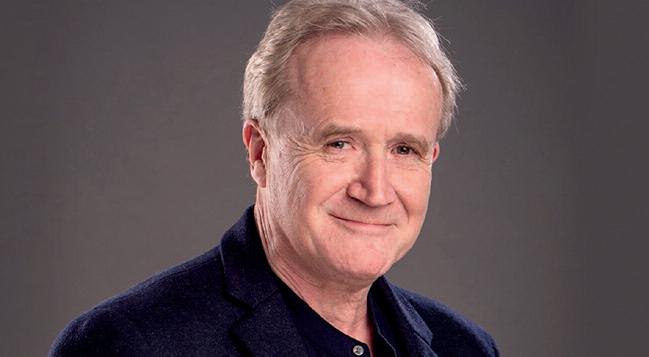
I stressed that social care wants to work with its partners to tackle the crisis ease pressure on the NHS and provide people with the care they need
Way back in 2001 the Department of Health published a document called Building Capacity and Partnership in Care I think it would serve the Government well to revisit that document
“We also discussed improving commissioning, including longer term contracts the direct purchasing of beds from the NHS to the provider and the ongoing bugbear of meeting duplication of requirement from the CQC local authorities and the NHS
It was extremely useful for our regional organisation The Independent Care Group from North Yorkshire to get a one to one conversation with the minister
I would describe it as constructive the minister listened to the concerns we have and that is progress I would describe the minister as one of the most receptive I have met, but time will tell ”
He has invited her to visit a care provider in North Yorkshire to see the pressures firsthand Mr Padgham also presented the Minister with a copy of the ICG’s Five Pillars of Social Care Reform docu ment which sets out what it believes are the actions required to save the sector
The five pillars are:
Ring fence a percentage of GDP to be spent on providing social care to those who already receive it and the 1 6m who can’t get it
Create a unified National Care Service incorporating health and social care
Set a National Minimum Wage per hour for care staff on a par with NHS
Set up an urgent social care task force to oversee reform
Fix a ‘fair price for care’ cost per bed and cost per homecare visit
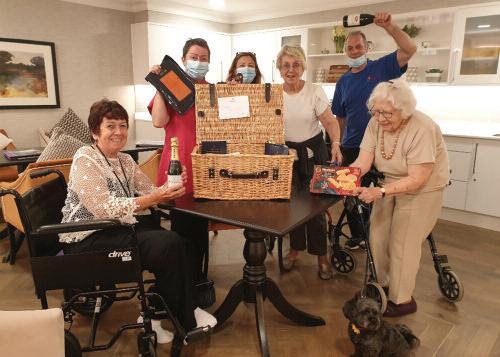

So we are launching our Christmas competition and once again a delight ful luxury Scottish festive hamper is waiting to be delivered to a care home who pushes out the boat to celebrate Christmas

Remember
All you have to do is briefly tell us what you did at your home to celebrate Christmas menus and decorations details of any festive events you held Christmas fundraising activities or details of the homemade traditional tasty delights you create with a couple of photographs and perhaps quotes from residents and we will pick a winner! That s it! We will be picking a winner on Friday December 30 and hope fully will be dispatching a luxury hamper to a lucky winner the very same day!
Simply email your entry to nominate@thecareruk com
In this article we briefly explore the areas of Health and Safety Working Time Regulations 1998 and employee’s rights to take time off to provide care for a family member
HEALTH AND SAFETY
Health and Safety at Work Act 1974 (HSW) is the key regulation policing health and safety The Act enforces the employer s health and safety obliga tions so far as reasonably practicable
This means that employers must bal ance real risks against control of risk in terms of cost and trouble Employees’ duties are followed by a similar princi ple which is to take reasonable care to protect their own safety and any other person who may be affected
The Act does not provide employers with a step by step guidance on how to effectively manage health and safety but instead gives the employer discretion Whilst there are no approaches set in stone the below is a good starting point:
Risk Identification: This can be achieved by simply walking around the workplace and identifying what could reasonably cause harm
Additionally communicating and asking staff members
Risk Assessment: The next step is to carry out a risk assessment of the risks identified This is a process of identifying the potential harm a risk can cause and the likelihood of it
Controls: Once the risk has been assessed it is the employer s duty to
implement measures to min mise the risks
Training: The final step in this process is to raise awareness The purpose of training is to raise awareness of the risks identified and teaching employees how they can overcome these r sks and effectively manage health and safety at work
The Working Time Regulations 1998 governs employees patterns of work holidays rest period and working time Whilst it covers a large pro portion of rules and regulations in the care sector the following areas are considered to be of importance:
Rest Employees must receive at least 20 minutes of break when working more than six hours a day 11 hours of uninterrupted rest per day and 24 hours of uninterrupted rest per week
Working time: Employers must ensure that the average working time does not exceed 48 hours per week (17 week reference period) Employees are able to opt out of the 48 hour working week but employers must ensure adequate rest and breaks are given
Night workers: Night time is usually defined as period of work between 11pm and 6 am If an employee regularly works at least three hours dur ing night time, they will be considered a night worker A night worker should not work for more than 8 hours in each 24 hour period
• Holidays: The WTR entitles employees (whether full time or part time) to a minimum of 5 6 weeks holiday The employer ensure the employees receives the right amount of holiday leave and pay depending on their contract and hours worked A recent Supreme Court case ruled that the common 12 07% method of calculating holiday accrual is no longer legal This can cause problems if the employee is working irregular hours and it is recommended to seek legal advice if your business uses this calcula
An employee has a statutory right to take time off from work to help someone who depends on them regardless of their length of service The law does not specify how long much time can be taken off or how many occasions but it states that the time off should be reasonable Employers should be flexible in this regard and consider each employee’s situation on a case by case basis
The following persons are considered a dependant : Spouse partner or civil partner
Parent
• Child
A household member (not tenant or lodgers)
A person who depends on them for help in the event of an emergency such as an old neighbour
Employers are not obliged to pay for time off but may chose to do so and implement it as a policy Employers must also be aware of overlap ping policies for this type of leave For example if your company has implemented a compassionate leave policy this may overlap with the statutory right to take time off for family and dependants
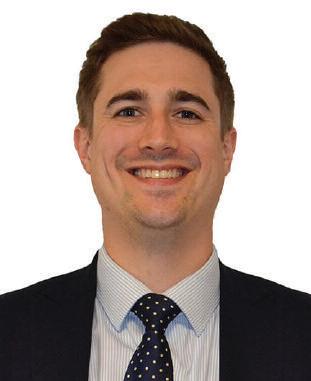
This article is merely the tip of the iceberg; nursing homes are bound by far more rules and regulations The purpose of this article is to guide you in the right direction if you are new in the sector but for those who are experienced we hope this has served as a refresher
Professor
Professor
visited the 74 room Home on Thursday November 10 and was given a tour by the charity’s Chief Executive Andy Cole Head of Care Quality Walter Chikanya and Home Manager Reggie Ballos She later said It was great to see such good care happening in such a lovely place ”
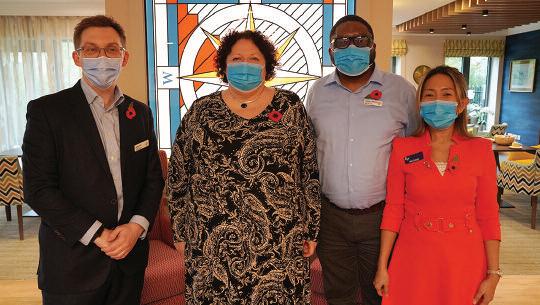
Professor Sturdy also spoke to Chelsea Batchelier who has just begun her two year SNA course and Mercy Sharp who is nearing the end of her Nursing Associate studies Royal Star & Garter was one of the first care homes in the country to accept Nursing Associate placements and is now actively supporting staff to qualify in their own right
After her visit Professor Sturdy said: “It was truly heartening to meet so many fantastic people and hear
about their commitment and passion for social care It was great to hear about the Nursing Associate programme and speak to Chelsea and Mercy about the journey they are on with their course They spoke passionately about the support they’re getting both at a senior level and day to day Credit must go to Royal Star & Garter for this I recognised a commitment at the top to grow their own staff and to invest in individuals ”
Chief Executive Andy Cole said: It was a privilege to welcome Professor Sturdy to our Home and I was pleased to show her the person centred care pro vided by Reggie and her fantastic team Nursing Associates will play a vital role in the sector going forward so I was really happy that Professor Sturdy spoke to Mercy and Chelsea about their SNA journeys and how important the programme is to them ”
Care England has written to Ofgem and the Department for Business Energy and Industrial Strategy (BEIS) accusing gas suppliers of being unduly onerous in their practices and asking for the matter to be investigated
It follows a review by the not for profit energy consultancy Box Power Cic which found that gas suppliers were not passing on recent decreases in wholesale prices to companies in the care sector In a letter to Ofgem, and the Department for Business, Energy and Industrial Strategy, chief executive Professor Martin Green OBE accused energy suppliers of being unduly onerous in their practices saying:
“We believe there can be no justification for charging such horrendous and financially crippling rates that gas suppliers are explicitly prohibited from doing so
“Ofgem’s supply licence stipulates that companies must take all reasonable steps to ensure that the terms of each deal for customers not locked into long term contracts are “not unduly onerous” Undoubtedly one of the most pressing issues facing the country at present is the ongoing energy crisis
The rises in wholesale electricity and gas prices are having a profound effect on businesses and individuals across the country
“However there are few environments where the impact has been as severe and devastating as in the adult social care sector which is required to heat facilities this winter and increase ventilation by letting in fresh air into indoor spaces ”
Box Power noted that 1 172p p/therm (40p/kwh) prices bear no relation to the daily spot price of just 3 2p/kwh currently with December 2022 priced at 8 3p/kwh (1p kwh 29 3 therm) The analysis added that even lower prices at 25p/kwh by some gas suppliers were still unjustified
The government announced support on business energy prices which runs until March 2023 in September
An Ofgem spokesperson said: Ofgem s priority is to protect consumers and businesses and ensure they pay a fair price for their energy That’s why we are working with government and stakeholders to determine if further action or assistance is needed to help protect businesses including care homes and their residents including whether a review on compliance of existing obligations is needed We have a track record of robust action in compliance and enforcement where needed We have received the letter from Care England and will respond to it in due course
two
The pharmaceutical company
III
of the
“People with Alzheimer s disease desperately need better treatment options so it’s extremely disap pointing when a potential drug doesn t produce the benefits we were hoping to see
“The drug’s manufacturer Roche will soon be presenting the results from this trial and this will allow the research community to learn from them to help inform future Alzheimer s drug development
“Gantenerumab is one of several drugs that has been designed to remove the hallmark Alzheimer’s pro tein amyloid from the brains of people in the very early stages of the disease
“Earlier this year a final stage trial of a different anti amyloid drug called lecanemab successfully cleared amyloid from the brain and slowed the decline in participants’ memory and thinking skills Looked
at together data from the lecanemab and gantenerumab trials will yield important insights as to why one anti amyloid drug worked better than the other and this will help further refine this approach to treating people with Alzheimer’s disease
Alzheimer s disease is complex and potential drugs that target other aspects of the disease are also making their way through clinical trials There are over 140 potential Alzheimer’s drugs in clinical trials the majority of which target proteins or processes other than amyloid While anti amyloid drugs are perhaps the closest to making it to patients, they are not the only hope for effective new treatments
It is now absolutely critical that the UK government delivers on its promise to double dementia research funding to £160m a year by 2024 This will help to put UK dementia research at the forefront of the global search for life changing treatments and pave the way for more breakthroughs that will transform the lives of people with dementia and their families across the UK ”
The adult social care sector has called on the Government to properly fund and reform social care to end a gridlock in the care of older and vul nerable people
A highly critical new report by the Care Quality Commission (CQC) has highlighted the gridlocked state of health and social care in England saying it is “unable to operate effectively” amidst record demand and workforce crises
The report states: The workforce crisis in social care is greater than that of the NHS, with 165 000 vacancies

Around 500 000 people are waiting for an adult social care assessment for care or a direct payment to begin or for a review of their care In the first 3 months of 2022 2 2m hours of homecare could not be del v ered because of insufficient workforce capacity, leading to unmet need and under met needs
Only 2 in 5 people are able to leave hospital when they are ready to so CQC commissioned a survey of more than 4000 people aged 65 and over who had used health or social care services in previous 6 months: Over 1 in 5 people (22%) sa d they were currently on a waiting list for healthcare services
37% on a health waiting list did not feel well supported by health and care services

41% said their ability to carry out day to day activities had got worse while waiting

Of those waiting for a care needs assessment 57% said they felt very or fairly well supported while waiting but 36% said they felt they were not very well or not at all supported 40% of those waiting for a care needs assessment said that their ability to




carry out day to day activities was now worse than when the assessment was required while 15% said it was better
There is unequal access to health and care serv ces for ethnic minorities and people with learning disabilities and autistic people
While most people are still receiving good care when they can access it too often people are not able to access the care they need the report says and capacity in adult social care has reduced and unmet need has increased
Only 2 in 5 people are able to leave hospital when they are ready to do so contributing to record breaking waits in emergency departments fol lowing a decision to admit and dangerous ambulance handover delays
As part of work that included a series of coordinated inspections across the urgent and emergency care pathway in 10 Integrated Care Systems (ICSs) CQC convened a group of 250 health and care leaders they described the system they work in as in crisis and shared their fears that the risk of people coming to harm represents a worrying new status quo
The report goes onto highlight growing public and staff dissatisfaction with health and care services citing the record numbers of people leaving the sector, all whilst providers continue to find recruitment more and more difficult

The CQC say that without urgent action staff retention will continue to decline across healthcare, which will only increase pressure across the board and lead to worse health outcomes for the population
To solve this whilst emphasising the need for long term planning and investment to understand and ultimately solve the problems at hand the CQC are urging local leaders to bring data and information together in order to come up with agreeable
The Barchester Care Awards celebrate the staff who go the extra mile for the benefit of the 12,000 residents living in Barchester s 248 care homes and private hospitals across the country Categories range from Registered Nurse of the Year and Carer of the Year to Dementia Care Champion and Activities Coordinator of the Year’
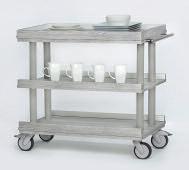

More than 2 900 nominations were received from homes and hospitals across the UK All entries were a very high standard and Mira Lazovic is over the moon to have been named the national winner beating hundreds of other nominees to the coveted title

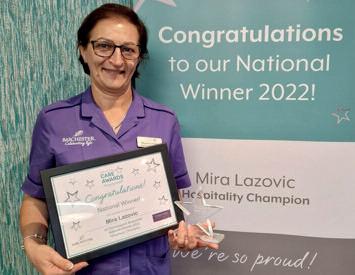
Mira Lazovic said “I am so very honoured to win this award it was such a shock when they called my name at the awards ceremo ny I work with such a great team at Chorleywood Beaumont and I am so grateful for all their sup port this award is for all of us! ”

Mira Lazovic s win was announced at a special national award ceremony which took place to celebrate the outstand ing achievements of Barchester’s many exemplary staff members who have all witnessed first hand the hardest 18 months in the history of social care General Manager, Ramona Stanciu, said: “This is an amazing achievement and the whole home is so proud of Mira Mira is so dedicated to her role and our residents She always goes above and beyond her duties to help others and make people happy
solutions that focus on the overall patient experience
AND UNABLE TO OPERATE EFFECTIVELY
Ian Trenholm Chief Executive of CQC said: “The health and care sys tem is gridlocked and unable to operate effectively This means that peo ple are stuck stuck in hospital because there isn t the social care support in place for them to leave, stuck in emergency departments wait ing for a hospital bed to get the treatment they need and stuck waiting for ambulances that don’t arrive because those same ambulances are stuck outside hospitals waiting to transfer patients
There s lots of great care out there from the GP practice in Manchester carrying out ward rounds in care homes, to the new initiatives introduced by a hospital in Newcastle upon Tyne which have improved people s access to and experience of cancer treatments to the ICS in Cornwall using inclusive technology to help give people more control of the services they use
“However, the fact is that it’s hard for health and care staff to deliver good care in a gridlocked system There are no quick fixes but there are steps to be taken now on planning investment and workforce that will help to avoid continuing deterioration in people s access to and experi ence of care By working together to address the issues that lie behind the gridlock, we can create conditions that mean that next year, more people can access good safe health and social care delivered by a better sup ported workforce who have more reason to be optimistic about the future

Our workforce is heading towards the exit faster than we re able to bring people in it is the metaphoric revolving door and for the care sector it has become the pandemic after the pandemic We all face the same problem but we also all make the same mistake we re expecting someone else to provide the solution
Social care has drastically failed to adapt to modern times A failure that everyone from top to bottom must accept responsibility for from working practices to technology and attitudes as a sector we have been afraid to change and we’re now paying a high price for it
As operators we re all part of the same unique culture We’re competitors all on the same side and while it’s a privi lege to be a part of it can also lead us to wait for others to solve the problem that we are individually more than capable of fixing ourselves The retention of teams included
Fortunately there are many practical measures you can take that when combined can transform your culture Piece by piece and with patience you can create an environment that reduces the daily pressures on your team, provides greater job security and promotes a healthier work life bal ance
Home from double digit turnover to
for absolutely everything up
Why? They didn’t work
Or do they keep their head down and do just enough not to step out of line? Spoiler: it s the latter Disciplinary policies are toxic to a workforce They instil fear, create doubt and cause loss of confidence People s performance wellbeing and attitude suffers at just the thought that a mistake could lead to disci plinary action
So what happened after we removed the policy? Remember when Dorothy left Kansas and stepped into the Emerald City for the first time? Exactly like that, from black and white to a vibrant new world filled with colour Our team were more relaxed more confident and most crucially unafraid We didn t just say that we need to learn from mistakes we gave them the platform to do so in full confidence that they had our support all the way
Almost instantly the changes were spectacular We saw a stunning drop in every area where errors can happen, a reduction in conflict between team members, more honesty, and greater confidence
In short it worked Our hope was that it would create a culture where our team were given supreme job security, total autonomy, and peace of mind Mistakes happen and they are also learning opportunities They are the pinnacle of self improvement but to reach those levels we need an environment that nurtures people not worries them
I know what you’re thinking won’t people abuse this policy? Of course Expecting everyone to adapt to your culture shift the way you hope is fantasy but I would fall to my knees and beg you to never become discouraged by them
The informal working ethos is how many of the best modern companies run They were borne in a time when the world of leadership became about protecting your team and supporting them through thick and think Throughout the 21st century they ve succeeded where we ve failed to recruit and retain the best people and to help get the best from them It’s time we caught up
Throwing most of your disciplinary policies (up to gross misconduct) in the bin is only one step in that direction It s a step that resonates with the younger people who we so desperately need to attract to our industry It’s a step that empowers your team today It’s a step that many operators will be afraid to take But I plead with you from experience be bold be brave as it works and we are testament to that
Only one in five of England s largest councils are confident they can meet their legal obligation of setting a balanced budget next year with a new survey revealing the extent of planned service reductions due to soaring inflationary pressures
Council leaders warn that ‘everything is on the table’ in reducing local services if the Chancellor does not spare councils from further cuts and provide more funding for local government in Thursday s Autumn Statement as they grapple with £3 5bn of additional costs this year and next
The survey carried out by the County Councils Network (CCN) finds that in order to make up the shortfall and stave off bankruptcy councils are likely to have to reduce economic growth projects their spend on climate action, and reduce adult social care packages and support for young people They are also likely to reduce other essen tial everyday services such as bus route subsidies waste centres and streetlighting This comes off the back of councils seeing a reduction in spend each year between 2010 and 2018
The survey which received a 90% response rate asked councils about the impact inflation and demand were having on their budgets over the next two years and reveals:
Only one in five (22%) of councils are confident of preventing financial insolvency next year if there is no additional suppor t in the upcoming Autumn Statement
Councils are legally obliged to set a balanced budget unlike the NHS, meaning they must use their reserves or cut services if spending exceeds their funding
This is because councils are grappling with £3 5bn of additional costs this year and next due to inflation and rising demand; more
than double the expected rise.
Even if local authorities raised council tax by 3% and the Chancellor does not reduce their budgets further those councils face a funding gap of £821m In addition they face £700m of extra costs for their cap ital expenditure over this year and next which is for one off projects such as new buildings and roads
At a time when economic growth and levelling up is a key aim of the new government, councils say they will have little choice but to cut back on growth related activity
Almost two thirds (65%) of respondents said it was ‘likely or very likely’ that they will pause or cancel some economic growth and major road projects as well as routine road maintenance whilst 81% said it was likely or very likely they would have to pause or cancel projects such as building new leisure centres and bus or train station improvements In addition 78% said it was ‘likely or very likely’ they would have to scale back climate change action
Ser vices for the elderly, vulnerable people and children could be scaled back
In total 72% of councils said it is likely or very likely they would tighten eligibility for adult social care services, and 56% said they would likely have to reduce reablement and community based adult social care services In addition 63% would scale back school trans port services with almost half 44% councils said it is likely or very likely’ they would have to cut support packages to young people with special educational needs with 45% reducing the number of chil dren s centres and youth services
Highly valued ever yday ser vices would also see reductions, unless fur ther funding is made available
In total 75% of respondents said it was likely or very likely they would cut some or all bus route subsidies which enables services to run on uncommercial routes Almost two thirds 63% said it was ‘likely or very likely’ they would turn off an increased amount of streetlights or turn them off at certain periods in the night Over half (56%) of councils also said they would likely reduce the number of libraries and (53%) household waste recycling centres or cut their opening hours
Cllr Sam Corcoran Labour Vice Chairman of the County Councils Network said:
“The next two years are shaping up to be some of the most chal lenging for councils in recent memory After a decade of austerity and with inflation soaring, if the Chancellor does not spare councils from further cuts and provide more funding for local authorities everything is on the table when considering which vital services to cut
This County Councils Network budget survey paints a clear picture of what will happen if we do not receive more funding to address inflationary and demand pressures Councils will have little choice but to reduce vital everyday services and those for the most vulnerable in society as well as economic growth projects and those aimed at tackling climate change Reducing these all create a false economy that stores up problems for the future
Even these decisions will not be enough with less than one in five councils confident of setting a balanced budget next year without further support This is why it is vital that the government recognise the value in supporting councils with investment in local govern ment allowing us to continue vital economic growth and climate action, supporting people to stay outside of hospital settings, and provide vital services people rely on every day

Residents at The Belmont in Worcester took part in a helicopter flying experience to prove that nothing should stop you from doing something that your heart is set on
Earlier this year both residents were presented with the question about what their dream would be; both residents said to fly high and see the world from above The team made this dream a reality by organising a day in the skies
Flying over Eastnor Castle and the Malvern Hills, the 20 minute flight was a memorable moment for Christine and Tanya The day was not only a new and exciting experience for both residents but one of reflection flying over many sights that invoked strong memo
ries and sentimental meaning
At the end of session they received certificates of achievement which they proudly showcased in their home
Registered Home Manager for The Belmont Sandie Preece said: Our two wonderful residents are living with dementia and when we asked them if they had a wish both residents wanted to see the world from high above To grant that wish for them and see the delight in their faces when they took off was truly lovely to see Our Belmont wishes are in place for all of resi dents to make and we try our hardest for them to come true We are so pleased that we could fulfil this wish for them both and want to thank every one involved for making it such an enjoyable experience
Care home residents may soon have the legal right to see visitors however the care sector has expressed concern that faces being “vilified” on this issue when we re trying our very best
While visiting restrictions in England’s care homes have been lifted some care homes still do not allow visitors and according to The Times the government is now contemplating introducing legislation to make it happen Speaking to the Times Care minister Helen Whately said she is “determined to fix the issue around visiting amid reports some residents are still being denied quality time in person with loved ones as a precaution against the spread of coro navirus
The Times has reported that options to address problems could include introducing legislation giving res idents or patients a right to receive visitors or legislation telling the health watchdog the Care Quality Commission to inspect visiting policies when rating care homes or hospitals Nadra Ahmed the chair of the National Care Association branded called for the Government instead to fund the sector properly highlighting the ongoing issue of staff shortages She told BBC Radio 4’s Today programme: “I think it’s really disappointing that we’re looking at another piece of legislation in relation to the care home sector
“And I think it will be really important for people to understand that we’re probably one of the most legis lated against parts of the sector
“I would always start from the point that the wellbeing of every individual in our care service that we sup port is enhanced by a visit and pre Covid that is what happened We had open visiting This is a conse quence of Covid that we have to go with the guidance that we do she said A spokesman for the department said: “Our guidance clearly states that residents in care homes should be able to have at least one visitor in all situations
We will continue to work with health protection teams to ensure the advice they are giving to care homes is proportionate and reflects Government guidance
We urge all trusts and care homes to follow the guidance and ensure they are facilitating these visits which play a crucial role in the wellbeing and care of patients and residents


The Care Quality Commission is able to take regulatory action where there are concerns that safe and proportionate visiting is not being facilitated ”
Referring to her personal experience Ms Whately told The Times: No one can be in any doubt now how much visits matter
The darkest days of the pandemic are thankfully behind us but I m still hearing from families (who are) being stopped from visiting loved ones
“I know how it feels I didn’t know if I would see my mum alive again when she was very ill in hospital in the summer
“I remember well the feelings I had at the time: grief mixed with frustration and even anger at a system that seemed to lack humanity
Campaigner Nicci Gerrard argued Covid 19 had shown why people should have a legal right to see their loved ones in their time of greatest need
The co founder of the charity John’s Campaign said those with special needs such as dementia should have the right to have their essential caregiver wherever they go
Speaking on the Today programme “There are lots of complicated things around the edges but at the centre there’s this clear message that people should not be separated from those that they love during times of their greatest need
“And Covid has shown why that needs to be enshrined in law It’s very easy to sweep away these human rights
Residents
Pamela
David who served in the Navy as an engineer said he was thrilled to be invited to attend the parade down to the Petwyn war memorial

David said: “It’s very important to me to remember those who have lost their lives in battle
“It was wonderful to see so many people of all ages also showing their sup port
An old military jeep that featured in the commemoration reminded Trevor of
his time as a young child growing up in the village of Warboys near Huntingdon
Trevor said: I remember when I about five years old and the Americans from the nearby base would give us children from the village rides in their jeeps around the fields
They also would offer lifts to anybody who needed it so that they could stay in favour with the villagers ”
Tunde Zsiko, Brook View's Customer Advisor, who accompanied the resi dents at the commemoration said: While this was a sombre occasion it was lovely to see our residents reminiscing ”

It is grossly irresponsible for the government to assist wide spread speculation in relation to the fate of adult social care reform says National Care Provider Alliance
The promises and commitments on reform were made to the millions who receive care and support unpaid carers and those who work in the sector
Social care should be at the top of every Member of Parliament s priorities it sits at the heart of communities up and down the country and it changes peoples’ lives
The Care Provider Alliance has called on the government to make clear today that there will be no delay to the planned timetable for reform and that rather than kick the reform can fur ther down the road, they grasp the urgency this fiscal event and escalate it to the top of the table Investing in people is the responsibility of any government that has fairness at its heart This government must ensure people can live the lives that they want contribute to their communities and add value to the economy There can be no delay social care reform cannot wait
MPs’ post bags and the media have rightfully been full of stories that outline the very real trauma associ ated with delays to social care reform Each and every person struggling to access the care they need for rehabilitation day support care at home palliative care residential care or supported living can tell you that properly funded reform is the only way forward
CPA Chair Nadra Ahmed says The plans as they stand are not sufficient to create the kind of step change that people are calling for however, doing nothing and this delay will only accelerate the pain, fur ther exacerbating the structural instability across the sector The delay impact on us all including the NHS who will also bear the brunt of our unfunded social care system ”
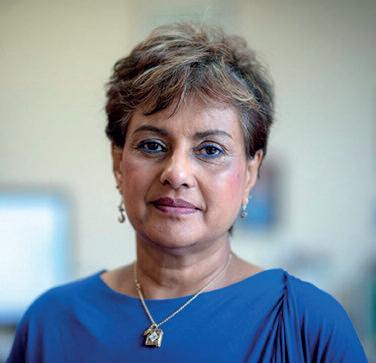
This position is reflected in recent reports from the CPA and the Association of Directors of Adult Social Services (ADASS)
CPA report on The State of Social Care and Support Provision highlights the key issues facing the entire social care sector including workforce recruitment and retention challenges with one in ten posts vacant inadequate funding with the gap being in excess of £7bn, and the rising costs of living adding to the struc tural instability
The ADASS Autumn Survey indicates that more than 9 in 10 (94%) adult social services directors in England do not believe they have the funding or workforce to meet care costs of older and disabled peo ple in their area
Family run care provider Excelcare has announced that a selection of their care homes in Essex will be opening warm banks for people over the age of 65 These warm banks will be free to attend and offer a safe haven for people to seek warmth and relaxation when in need


With the current cost of living crisis crippling families across the UK and the temperature steadily dropping as we approach winter Excelcare has launched their warm bank initiative to provide support to an age group that are most likely to feel the harsh effects of the cold and rising energy costs
From 11am 4pm people aged 65 and over will be welcomed into Excelcare homes listed in the graphic to seek refuge from the cold and enjoy a hot drink
The warm banks in each home are situated in communal areas such as lounges and dining rooms, so guests will also have the opportunity to engage with people who live and work in them This will provide some welcomed company to elderly members of the community, especially those who live on their own or struggle with feelings of loneliness
“I
Precautions are in place to ensure those who currently live and
Practice makes perfect and this philosophy is advisable to achieve a top performance when industry regulator inspectors scrutinise a care home
To achieve an outstanding rating from the Care Quality Commission (CQC) a home’s leadership planning legal compli ance care and procedures need to be excellent not only in deed but also backed up by meticulous documentation
To overcome any doubts about its quality of care, a home should arrange regular mock audits of its operations and records
Homes that don’t feel confident about identifying any deficien cies themselves can always seek help from independent external experts to point them in the right direction
This will help identify enact on and embed factors essential to providing successful and person centric care and services
The reputational and commercial damage to a home given a poor rating by the CQC can be devastating
It can lead to a fall in demand for its care from potential new resi dents and current occupants and their families considering alternative accommodation which will impact on its financial viability
A good reputation is hard won but can quickly and easily be lost through sloppy practices and proce dures if a home s owner or managers take their eye off the ball Care homes striving to retain an outstanding ranking or to improve on a below par performance should operate as if there is an inspector on the premises every day CQC inspections usually are unannounced Therefore, those homes that continually concentrate on meet ing the regulator s criteria and conditions are less likely to be given a low rating
There are three key aspects to the performance of a care home these are:
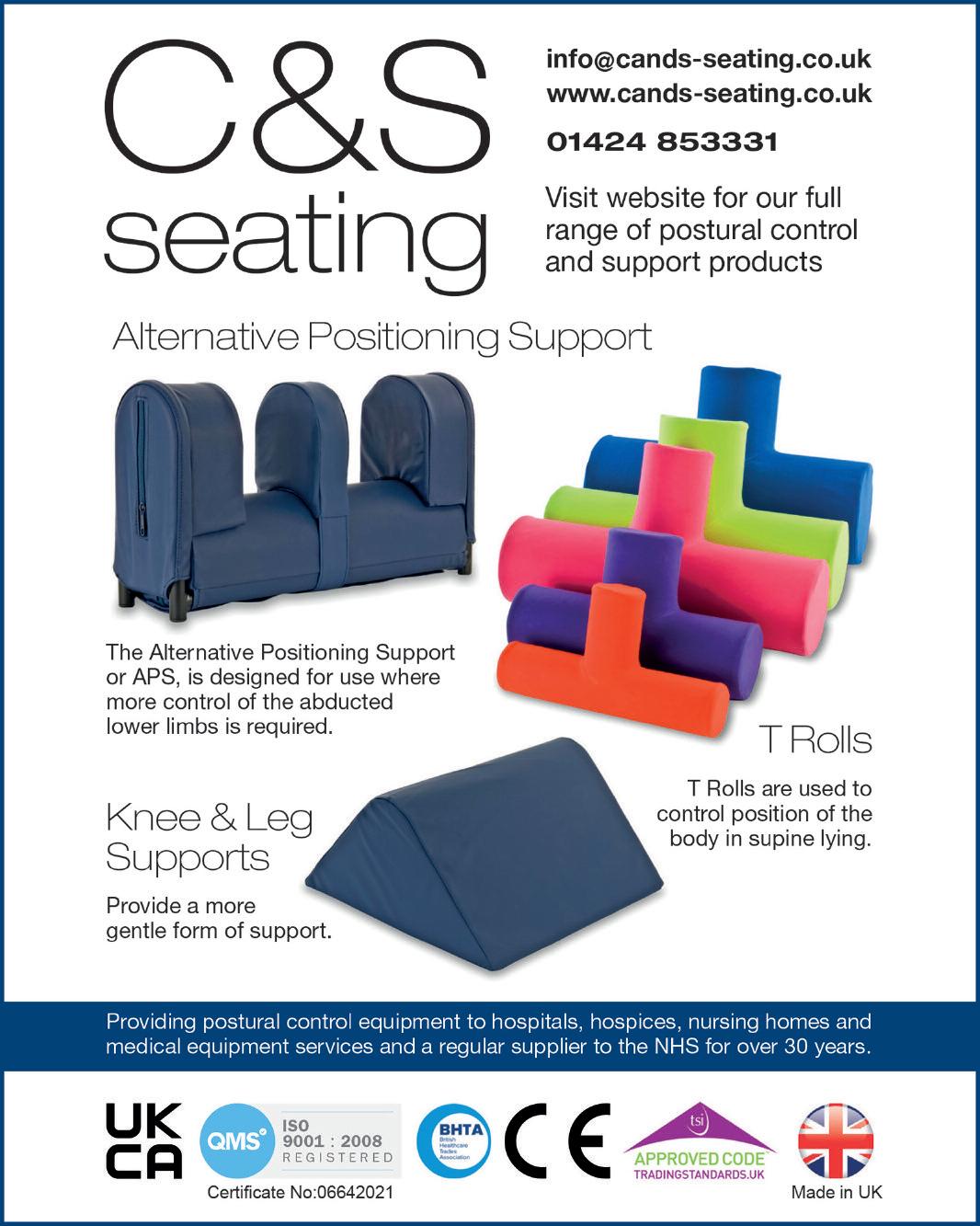
• Quality care The effective care of people that ensures that residents are living their best lives Financial performance A care home must be sound financially and be able to attract and retain the high est calibre of staff
Management of risk Reducing risks in care health and safety and financially are essential for the long term well being of residents and the care home
By Kevin Groombridge, Chief executive, Independent Care Inspections (www careinspections co uk)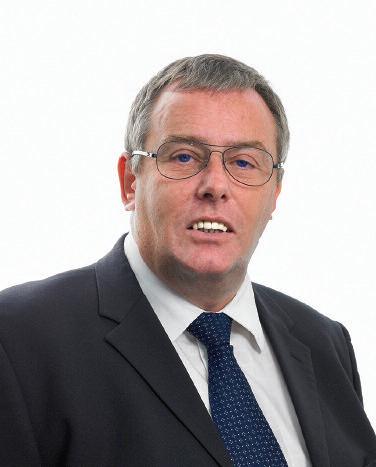
The most successful care homes, in terms of high regulator ratings, take a positive approach to inspection with robust systems, a high degree of preparedness and staff being positive about the inspection process
The preparation and availability of complete records especially care plans is essential for an inspector to locate and see evidence of strong and effective practice
Checklist for Inspection Factors to consider
There are four main factors in preparing for and achieving better inspection outcomes:
1 Clear understanding of standards, regulations, and best practice:
Communication is key Staff should be aware of and apply all relevant standards, regulations, and best prac tice
Regular and effective training and supervision is essential for employees so they are confident and able to demonstrate competency
2 Records and documentation:
It is not enough to be seen by residents and their families to be doing the right thing Detailed up to date and accurate documentation must be in place to prove this is happening and that the correct procedures, sys tems and methodologies are in place and being closely followed
3 Staff are briefed and confident
When staff are more relaxed and natural then residents are also Inspection can create pressure but confident staff are better at explaining and demonstrating good care and in people interactions This ensures that the inspector can observe a more normal process
To improve practice, it is vital that staff are trained, properly briefed and their confidence is boosted to partici pate positively in inspections
4 Quality assurance and continuous improvement
A care home that has confidence in its quality assurance system will be constantly reviewing practice to min imise weaknesses and build on strengths
This process is very effective if there are internal and external elements in auditing the home
The CQC inspector is independent of the home and is applying standards that are well known but not just specifically what the care home company has contained within its policies Inspectors will also be seeking evidence that a care home can act on deficiencies that are identified
The most effective care homes and care home groups utilise fully independent inspection systems to ensure that they can achieve higher ratings
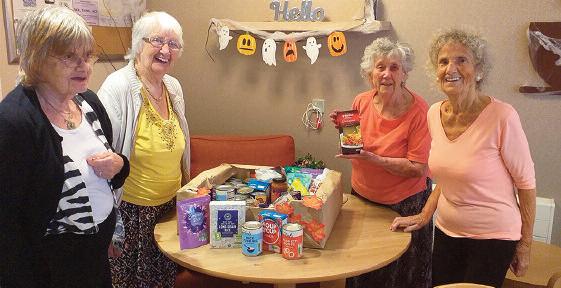
The
Four Acres are committed to being an active member of the community and look forward to strengthening relationships with those in the local area now and well into the future

Community groups including resi dents at local care homes run by The Orders of St John Care Trust (OSJCT) have created a range of artwork pieces for ‘Art Through the Generations a free exhibition open ing at Cheltenham Library on 21 November Contributors also include pupils at Stow Primary School and Warden Hill School and patients from the Paediatric Unit at Gloucester Royal Hospital
Laura Morris OSJCT Windsor Street Care Centre Customer Relationship Manager said Having previously worked as an art consultant I am incredibly excited to be able to host a second exhibition at Cheltenham Library Art Through the Generations’ focuses on nostalgia and childhood
memories told through artwork that has been created by local children and our care home residents ” Brenda a resident at OSJCT Windsor Street Care Centre and con tributor to the exhibition said: It s nice to have an opportunity to show other people what my hobbies are Doing this is a good way to occu py myself but I enjoy the art club activities as well I am looking for ward to seeing other people’s art ”
Suzanne Bruce Warden Hill Primary School Teacher said: “We were delighted to work in partnership with Laura and OSJCT Windsor Street Care Centre to help put on the exhibition It is always a wonderful experience for children to have the opportunity to display their artwork publicly within our local community ”
The National Association of Care and Support Workers (NACAS) and Institute of Health and Social Care Management (IHSCM) are calling for the immediate professionalisation of the care industry through the development of a voluntary register for paid carers much like the NMC and other health and social care colleagues
Both organisations have combined forces to address the emerging need for professionalising the Care industry and the Care workforce within England in a bid to improve recruitment, and retention and raise the profile of the profession CARE IS IN CRISIS
The call follows warnings that care providers are struggling with a recruitment crisis and unable to accept any more residents or take on new clients New team members are not entering the profession as they believe they will not be valued within their role
The recent CQC’s State of Care” report highlights the need for a reg istration process for care workers just like Doctors Nurses and other Health Care professionals Just as they do in other devolved nations but currently not in England
The organisations say that for employers it will mean attracting and retaining team members from an early age into a profession of choice
and the ability to offer a career path, and for the Social Care Workforce, it means professional and public recognition value and integrity with the prospect of a vocation for life
For the public the organisations add it offers professional gover nance bringing much needed reassurance to those in receipt of care and their families that additional checks are taking place on those pro viding care

RECOMMENDATION TO REGISTER CARE WORKERS IN ENGLAND in June this year the Care Workers Charity (CWC) welcomed a long awaited publication of the report into the treatment of lower paid eth nic minority workers in health and social care by the Equality and Human Rights Commission (EHRC) which was released on June 9 along with a detailed set of recommendations for UK Government
The report made a recommendation to register care workers in England which it said would align with policy in the devolved nations which the CWC said would support better workforce data, planning and professionalisation leading to better outcomes for all care work ers recognising their valuable contribution to society
Registration they said would inevitably lead to improved under standing of employment rights and give care workers a voice so that
abuses of the kind detailed in this EHRC report are easier to monitor and address with commissioners and providers
Liz Blacklock Director of Operations at NACAS says The Health and Social Care workforce works tirelessly to improve the lives of the most vulnerable in our society yet are some of the most underpaid and under recognised roles
It s time for a fundamental change in the industry The population is ageing and the need for professional care services will only keep growing This is an indisputable fact We need social care to be the best it can be
Such a register could include and support training passports quicker and safer recruitment paid job trials and much more
“We urgently need people working within the industry and those who receive Care and Support to complete a short consultation for the proposed register it’s here at https://www surveymonkey co uk/r/6KQKQF9 and will take just 3 minutes
The Consultation closes on 30th November 2022 following which it will be analysed and results reported
Iraq
The
The
Army veteran Stephen who suffered traumatic head injuries in a mor tar attack while serving in Basra in 2007, won the coveted Inspiration award in a public vote after raising thousands of pounds for Help for Heroes from his room at Royal Star & Garter in Surbiton with the sup port of care staff
He attended the dinner with his father James and staff from Royal Star & Garter a charity which pro vides loving, compassionate care to veterans and their partners living with disability or dementia The event was hosted by ITV news presenter Lucrezia Millarini and adventurer and former Army reservist
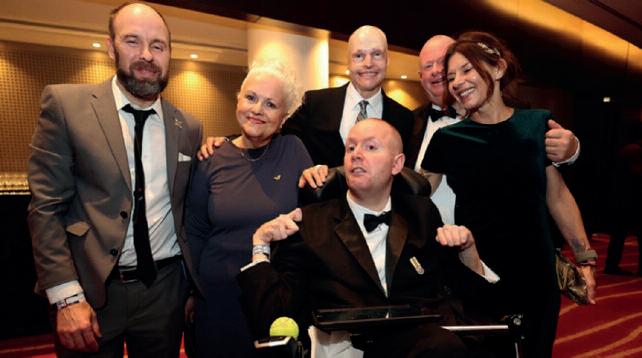
Hon Earl Howe Minister for Veterans Affairs Johnny Mercer MP and Chief of Defence People, Lt Gen James Swift OBE Former England foot ball captain David Beckham also provided a video message praising all finalists which was played during the ceremony
Afterwards Stephen said: It was a privilege to be at the Soldiering On Awards The room was filled with people whose inspiring stories demonstrate huge courage and bravery It felt amazing to be part of that Stephen, whose injuries left him using a wheelchair and communicat ing using a tablet undertook a gruelling 60 mile virtual London to Brighton cycle ride at Royal Star & Garter during the second lockdown, in early 2021
With the help of Royal Star & Garter staff he completed the chal lenge on his adapted static bike in six weeks raising more than £5 000 for Help for Heroes His Soldiering On Awards success was praised by the then Prime Minister Boris Johnson who said: “Stephen has shown remarkable courage in dealing with his injuries and great fortitude in raising money for Armed Forces charities I take my metaphorical hat off to him for his latest fundraising exploit I am full of admiration for him ”

It is almost 20 years since the tragic fire at the Rose Park care home in Uddingston near Glasgow claimed the lives of 14 residents
The fatal accident enquiry into the cause of the deaths conclud ed that there were multiple fail ures in building maintenance and fire safety management
It is 16 years since the intro duction of the Regulatory Reform (Fire Safety) Order 2005 and the Fire Safety (Scotland) Regulations 2006
Yet still in late 2022 care organisations large and small are being prosecuted for failing to manage fire safety issues which in some cases has led to loss of life and that should have been identified by a thorough Fire Risk Assessment
The largest fine was just under £1 million with £100 000 costs for failing to assess the risks to a resident smoker who was being treated with paraffin based emollient creams which can be flammable when allowed to build up on skin, clothing, or bedding Sadly, the resident died while smoking unsupervised outside in a garden shelter
The objective of a Fire Risk Assessment is to look at the premises and the people who use them
It s about understanding the potential risks then improving the fire safety precautions to keep people safe
The fire safety of residents in residential care homes and similar
premises relies on layers of protection such that if one of the protec tive layers fails the other layers should hopefully mitigate for the fail ure
The layers of protection may be; fire prevention which coincides with staff training fire detection and warning systems, the compartmentation of the building to prevent fire spread which includes fire doors, • fire suppression systems smoke ventilation
• effective plans to evacuate people from the affected part of the building maintenance programmes for building services assessment of how individual can be safely evacuated, staff training in evacuation plans and the use of evacuation equip ment, emergency escape lighting etc
Many times Fire Risk Assessments concentrate on the hard issues such as fire alarm adequacy and maintenance, fire doors, emergency lighting building maintenance and often insufficient attention is given to the soft’ issues
To be fair fires in care homes can generally be attributed to human error or equipment misuse or failure
However residents of care homes are individuals and have unique and frequently changing characteristics Issues that would seem to be straight forward in other environments can be complicated in a care home environment For instance all exit doors releasing from a locked position in the event of a fire alarm would appear to be a common sense provision until you consider that
some residents may use the exits unsupervised and be exposed to the risk of falling on stairways or wandering onto roadways
Evacuation aids may not be suitable for all residents or may not be capable of being used on all types of beds
While a fire at night when residents are in bed and there are gener ally less staff on duty is often seen as the worst case scenario fre quently though the daytime residents gather in lounges to chat and watch TV
Personal Emergency Evacuation Plans (PEEPs) rarely consider how individuals can be evacuated from such situations
The ‘soft’ issues therefore, of how individuals can live fulfilling lives but also can be safely evacuated in the event of a fire must be given sufficient importance during any assessment
Given the current conditions with many residential care homes suf fering shortages of staff or have problems recruiting new staff it is important to assess the capability of the staff available to be able to effectively conduct evacuations of any fire affected areas of the home
An evacuation assessment may consider the number of staff avail able the dependence of the residents to be evacuated and the num ber of bedrooms or size of the area to be evacuated and should be considered as part of the Fire Risk Assessment
However the number of residents and their individual dependence on others changes constantly and so the evacuation assessment should be reviewed regularly
Fire Risk Assessments are often seen as an annual one off event conducted (hopefully) by a competent person
Fire Risk Assessments should be an ongoing daily exercise conduct ed by all staff as they go about their daily routine
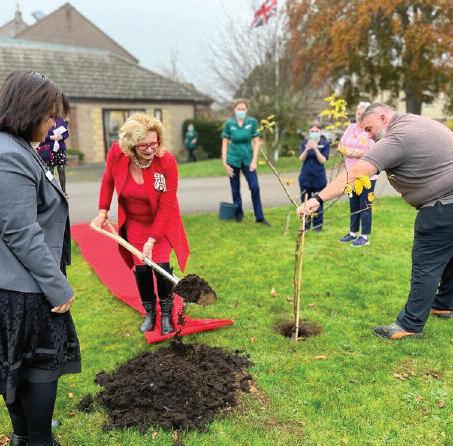
The
Tixover
Whether you work in a care home or another healthcare setting or you provide care to a friend or relative as a carer you re more likely to be exposed to the flu and COVID 19 viruses You also care for people who may be at greater risk and can easily pass these viruses on with out knowing
Both flu and COVID 19 can be life threatening and getting both flu and COVID 19 increases risk of serious illness Even if you’re healthy you can still catch these viruses and spread them to people you care for as well as to family and friends
The flu and COVID 19 vaccines are the best defence against these potentially life threatening viruses If you’re a carer and you haven’t had your vaccinations yet you can still get them free from the NHS before the start of the winter
Dr Adrian Hayter is a GP and National Clinical Director for Older People and Integrated Person Centred Care at NHS England He explains that COVID 19 still presents a threat in our care homes and calls for care home staff to make sure they are up to date with their vaccinations
“Undoubtedly vaccination has saved lives and it is also safe” he says But we are still at risk of very serious illness and people are in hospital with COVID
We can help protect care home residents by both bringing the vac cine to them and protecting ourselves those who go into care homes and work in them This helps stop the spread in care homes and that reduces outbreaks If we can vaccinate both residents and ourselves against flu and COVID 19 we will be doing as much as we can to pro tect our communities ”
“As a social care worker you’re more likely to be exposed to the flu and COVID 19 viruses which can be life threatening ” she says
You also care for people who may be at greater risk and it s easy to pass these viruses on without knowing
That s why it s essential that all care workers take up their offer of the COVID 19 autumn booster and flu vaccine this winter they will help protect you and your family from potentially serious illness as well as the people you provide care for ” UNPAID CARERS SHOULD ALSO GET VACCINATED Deputy SRO of the COVID 19 Vaccination Programme at NHS
The NHS autumn booster programme launched in September and millions of people so far have received their COVID 19 vaccinations but there s still a lot more that we can do she says
“Getting vaccinated in good time ahead of winter before viruses start circulating when it gets colder is really important Making sure carers whether they are paid or unpaid are protected is not just good for them it s good for the people being cared for too HOW
YOUR COVID 19
If you re a carer, NHS England is urging you to get your vaccinations as soon as you can and if you haven t got any earlier doses that you need of the COVID 19 vaccine, it’s not too late You can get them now and will be welcomed at a local vaccination centre
If you work in a care home the COVID 19 booster and flu vaccine may be offered through your employer If not you can still get the COVID 19 and flu vaccines through the NHS free of charge

Whether you re a paid or unpaid carer you can book your COVID 19 booster through the National Booking Service, call 119 or find a walk in appointment through the online vaccination walk in finder The flu vac cine may be offered at the same time but if not you can get it at a GP practice or community pharmacy at another time it s better to get what you need as soon as you can rather than waiting to have both at the same time
For more information on COVID 19 and flu vaccinations, visit www nhs uk/conditions/coronavirus covid 19 and www nhs uk/conditions/vaccinations/flu
The Adult Social Care Activity and Finance Report England 2021 22 is
among four publications which cover topics such as outcomes, activity finance and the opinions of those receiving care The reports relate to England and contain figures covering 2021 22
During that period, gross current expenditure on adult social care by local authorities was £22 0 billion which was up £0 7 billion from the previ ous year
The findings of the 2021 22 repor t also show: £16 6 billion (75 4%) of the total expenditure went on long term support an increase of £0 9 billion compared with 2020 21
There were almost 2 0 million requests for adult social care support from nearly 1 4 million new service users received by local authorities in 2021 22 This is equivalent to 5 420 requests per day in England up by 170 requests per day on last year
The number of service users receiving long term care has decreased to 818 000 continuing the downward trend in the number of service users receiving long term care since 2015 16 This is mainly driven by a decrease in those aged 65 and over as well as the continued impact of the coron avirus (COVID 19) pandemic reported by local authorities Other repor ts published this month include:
Measures from the Adult Social Care Outcomes Framework England 2021 22
This publication draws on a number of data collections and measures how well care and support services achieve the outcomes that matter
most to people
The findings include:
Fewer females (67 5%) reported feeling as safe as they would like in com parison to male service users (71 5%)
The proportion of carers who reported having as much social contact as they would like dropped to 28 0% in 2021 22 from 32 5% in 2018 194
The North East region was rated highest for quality of life for carers scor ing 7 7 out of 12 compared with the lowest regions London South West and East Midlands which achieved 7 1
For adults in contact with secondary mental health services the North East region has the highest proportion (44%) who are living in their own home independently or with family while the West Midlands has the low est proportion (15%)
PERSONAL SOCIAL SERVICES ADULT SOCIAL CARE SURVEY, ENGLAND 2021 22
This annual survey conducted by councils with Adult Social Services Responsibilities (CASSRs), asks service users questions about quality of life the impact of care and support services and their general health and wellbeing
The 2021 22 sur vey repor ts:
• 9% were very or extremely satisfied with the care and support they received down from 64 2% in 2019 20 The proportion of service users who were very or extremely dissatisfied with the care and support they received rose to 2 6% from 2 1% in 2019 20
Fewer service users (40 6%) felt they have as much social contact as they want with people they like compared with 45 9% in 2019 20 The number who felt they have little social contact and feel socially isolated rose to 8 3% from 6 3% in 2019 20
In relation to finding information and advice, 29 1% reported they found this easy which was down from 31 0% in 2019 20 while 14 2% found it very difficult which was an increase from 12 1% in 2019 20
While the number of service users able to get to all the places they want in their local area remained unchanged at 29 6% those who do not leave the home increased to 29 1% from 26 5% in 2019 20
The number of service users receiving pract cal help on a regular basis from someone l ving n their household dropped to 39 6% from 42 3% in 2019 20 The number receiving regular help from someone in another household also decreased to 45 0%, from 48 3% in 2019 20
Also published is the Deferred Payment Agreements Report 2021 227 Key information from some of these publications will be included in the next version of Adult Social Care Statistics in England An Overview, which brings together information collected by NHS Digital around different aspects of adult social care and covers from 2015 16 to the latest avail able data8
Statistics from this publication are also accessible through the Adult Social Care Data Hub where you can access official statistics dashboards metadata data collection information financial information and guidance documentation

Karolina Gerlich CEO of The Care Workers Charity said:
“We are extremely grateful to The National Care Forum who have signed up as a Founding Member of our £500 Challenge Every organisation who signs up and spreads the word is making it more likely that our charity can support care workers across the UK providing the right support when it is needed most We hope to sign up hundreds of businesses ensuring that we have the funds we need to continue providing essential grants and mental health support in the years to come ”

Professor Vic Rayner OBE CEO of the NCF said:
NCF are delighted to be founding members of this initiative By committing to the £500 challenge we will contribute to fund vital work to support and make a difference to care workers all over the country through this great charity
We urge organisations working in adult social care to accept this challenge and show that they really care about supporting the people who make up our essential workforce It is everyone s responsibility to ensure that care workers are supported to stay in their jobs and have a place to go in times of crisis
support care
Please donate what you can by following this link to The Care Workers Charity website: www thecareworkerscharity org uk/the care workers charity 500 fundraiser/
There are many legal considera tions for care home managers and operators not least those regard ing the safe and lawful employment of their staff Care employment par ticularly in residential nursing care can present a complex issue due to the nature of the work Shift pat terns absences and meeting the duty of care can all make managing employees tricky So what do residential nursing home managers need to be aware of in order to stay in the green?
Like all employees, all care work ers are entitled to be paid at least the national minimum wage for all the hours they work In 2021 a Supreme Court decision rules that carers who work ‘sleep in’ shifts are not entitled to be paid for the time they are asleep only the hours they are awake and working requires payment by law
In a similar vein time spent training or travelling between sites counts as working hours whereas commuting does not There are some scenarios where employers inadvertently pay staff less than minimum wage An example would be if the employee is required to buy their own uniform and this is deducted from their pay
It’s important for care home managers to ensure that they place proper emphasis on national minimum wage compliance given that there is often little opportunity to pay staff over this rate WORKING TIME
Every individual is subject to restrictions on their working time hours and breaching these can have serious consequences for employers The rules include a maximum 48 hour working week (although staff can choose to opt out of this, which should be agreed in writing), a minimum 11 hours rest in each 24 hour period at least one uninterrupted period of 24 hours in each seven day period and a 20 minute unpaid rest break when working for six hours or more
In special circumstances you can require staff to work above this level, but you must give the equivalent time off as compensatory rest to make up for it TIME OFF FOR
Carers have a right to unpaid time off during working hours to care for or arrange care for their dependents This is generally a short term meas ure, designed to enable carers to deal with an emergency or unexpected disruption rather than a long term solution to their responsibilities outside of work
Other rights exist where more long term solutions are required such as parental leave for up to 18 weeks (unpaid) or the right to request flexible working arrangements
Staff who are unable to work due to illness or injury are entitled to statutory sick pay from the fourth day of any absence for a maximum of 28 weeks Employers are entitled to request evidence (usually a doctor s
By Gareth Matthews, employment law partner at MLP Law (www mlplaw co uk)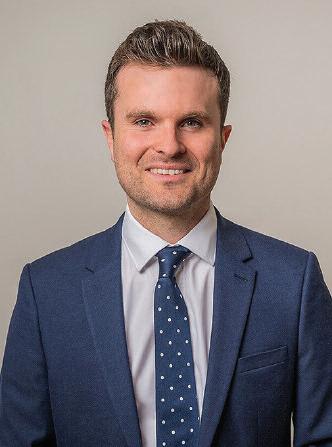
‘fit note’) for absences of more than seven days
Like many other employees carers are not generally entitled to paid time off to attend medical appointments with the exception of antenatal appointments Temporary rules covering Covid absences have now been removed meaning carers are no longer required to self isolate if they have Covid 19
Difficulties can arise where employees attend work despite being unwell with Covid 19 or any other illness for example if they do not want to lose earnings If an employee is sent home from work by their employer after declaring themselves to be ready and able to work they may be entitled to full pay
Employers must ensure the health and safety of their employees This should typically include things such as having an effective health and safety policy managing risk assessments and providing appropriate train ing
There are lots of opportunities for risk within most care and nursing homes! Risk of injury may arise out of many types of tasks including man ual handling use of chemicals and cleaning products exposure to conta gious illness and so on You should identify and assess each risk and put a plan to mitigate them in place
While running a care or nursing home comes with its own specific chal lenges the law applies in the same way as it does for any other business if you are unsure of your obligations or want to discuss your employment law needs the best thing to do is to seek expert advice from an employ ment lawyer
He
Simon
Ashley
When
groups Residents with dementia were also noted as being calm con tent and in a happy place which in turn had a positive impact on staff wellbeing
The study conducted by researchers from the Faculty of Health Sciences and Sport, in partnership with wellbeing, arts and fitness compa ny danceSing Care followed 47 residents from 10 Balhousie Care Group homes across Scotland over a period of 12 weeks as they evoked memo ries and improved their mental emotional and physical wellbeing
Residents and caregivers got their toes tapping hands clapping and voices singing as they enjoyed digital music and movement resources created by the danceSing Care team in consultation with NHS healthcare professionals
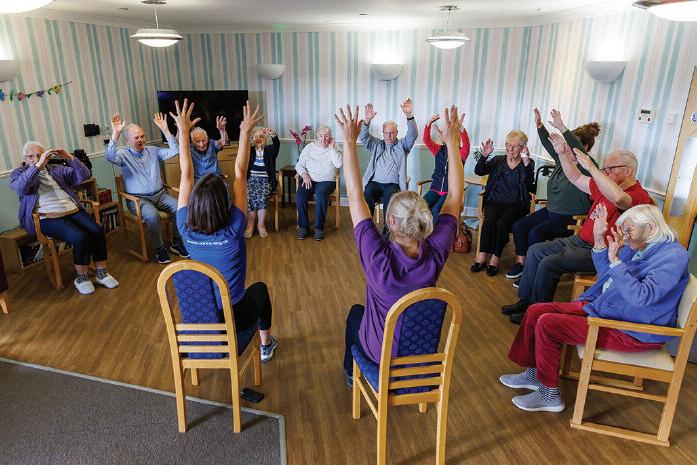
Over the study period, residents joined the online danceSing Care ses sions four times per week where they were encouraged to take part in a variety of fun and meaningful activities including everything from chair and standing fitness music and singing bespoke Memory Lane radio shows and musical concerts
The sessions proved increasingly popular as the weeks went on and a range of benefits and improvements to residents’ wellbeing have been reported
Academics looked at a number of aspects of participants health and wellbeing spanning anxiety and depression stress and loneliness sleep satisfaction and indications of frailty such as appetite and unintentional weight loss The study showed improvements in a number of areas
Balhousie Care Group also reported that the collective mood of the res idents was visibly improved during the sessions Even those participants who were demotivated at the beginning were visibly happier by the end of the session or those not actively taking part still enjoyed the benefits of being present while the session took place
The numerous benefits and joy from the danceSing Care sessions were exemplified in moments such as one resident after being hospitalised returning to the home and immediately asking to take part in a danceSing Care session As the programme progressed residents waited in the lounge for the sessions to start showing enthusiasm and excitement
It was noted that residents participated more in each movement ses sion as the weeks went on with visible improvements in physical strength Staff members commented that the success of the programme was visi ble in the residents eyes smiles and more smiles and one resident described the mood boosting music sessions as being “good for the soul”
The study also identified challenges to delivering the programme such as staff time and availability of suitable technology so solutions to these can be incorporated into any future activity
One resident who particularly felt the sessions had a positive impact on their health and wellbeing was 79 year old Robert Wilson a resident at Balhousie Coupar Angus Care Home
Robert has always enjoyed an active lifestyle being a former gym member who did Tai Chi swimming and used weight machines He found that the danceSing Care sessions helped to keep him active and social
Robert said: I very much enjoyed taking part in danceSing Care exer cise and music sessions I think I’ve benefited a lot from taking part in the programme as the sessions have kept me active and helped to improve my wellbeing and even my fitness
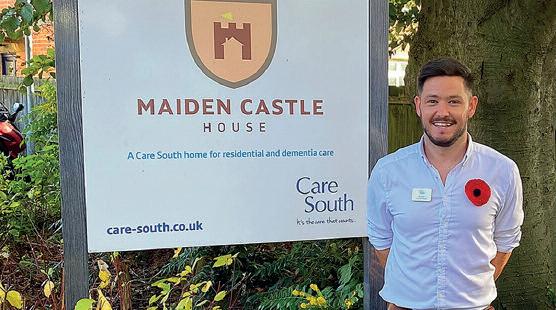
I enjoyed the fitness part of it the most and have become familiar with the moves as they were easy to follow I love music and found the music part of the programme very enjoyable too
Care home staff also benefited from the injection of music and move ment into their weekly routine with team members reporting improved mood, physical health and job satisfaction
Bonds have been strengthened even more between staff and residents with the programme encouraging increased interaction between the two
Professor Anna Whittaker the study lead from the University’s Faculty of Health Sciences and Sport said: The early results of the study are extremely promising in terms of the positive impact that music and move ment can have on care home residents and staff alike Giving residents something to look forward to and a chance to engage with one another has visibly improved their quality of life which is exactly what we were hoping for Such good results at this stage are really promising for the future and we hope this type of programme could be implemented in care homes across the country before too long We did also identify some challenges to delivering the programme in care homes which we will address in our future research ”
Karen Johnson Quality Director at Balhousie Care Group said: As a care home operator we see first hand the benefits of music and exercise to our residents However, to have this tracked, documented and researched to such an extent is valuable both to us and the whole social care sector Our homes thoroughly enjoyed being part of this pilot project and feasibility study, and we hope to see such programmes extended to more care homes across the country ”
Natalie Garry from danceSing Care said The danceSing Care experi ence has been developed not just for people in care themselves but for the caregivers too It can create solid change and help create a happy vibrant community with a core of wellbeing and improving fitness We know anecdotally that our music and movement resources positively impact mental health emotional wellbeing physical condition and improved socialisation and were excited to team up with academics from the University of Stirling and Balhousie Care Group to prove this Even with the restrictions of Covid we ve been able to launch this important research project which will positively impact the provision of music and movement resources for older people ”
The success of the novel pilot project highlights the possibility of simi lar activities being adapted and rolled out across the country into the future with further studies underway and in planning
A realist evaluation of the feasibility of a digital music and movement intervention for older people living in care homes study is available to view here Further analysis is expected to be conducted and published in the coming months
care home They blame the government for not funding them but we increasingly see that the money they receive is used to fill their own financial black holes and are not reaching independent providers
The new Prime Minister must pay particular attention to the health of the nation and should ensure previous pledges are honoured to increase funding of social care and also to ensure that independent social care providers receive the right fee for care This is a sector that is crying out for intervention

Over the past 30 years hospital bed capacity in England has more than halved from around 300 000 in 1988 to 140 000 in 2022 while the number of patients treated has increased significantly leaving the NHS with one of the lowest rates of hospital beds per person among OECD countries An estimated 117,000 patients died last year waiting for medical care on the NHS and the number of patients waiting for non emergency NHS care is at record levels about 6 5 million Many of them, are people in employment who have taken sick leave reducing growth and productivity The vicious cycle of bed blocking by older people who no longer need hospital care needs to be broken for people in employment to be treated rapidly in hospitals so there is no productivity loss This simple equation needs to be appreciated
A properly funded social care system ensuring additional funds going to local authorities is ring fenced for independent social care providers is urgently needed Over 300 000 vulnerable older people receive funding through local authorities and CCG and have their safety compromised because the fees are currently 40 per cent lower than the true cost of care

It is the statutory duty of local authorities and the CCG to pay the right cost for care however their significant market influence means that if a care provider insists on the right fees they simply stop placing residents Thus many vulnerable older people end up getting low quality care with daily news on some safeguarding issue at a



The most cost effective way to ease the burden on the NHS is to increase support to care homes so that eld erly patients are not blocking hospital beds at great cost because care homes are closing down or are refusing to take them for low fees If the working age population do not get timely medical treatment due to hospital bed blocking sicknesses absences will continue to increase and productivity will reduce creating a vicious cycle of low growth
Unless social care providers are paid a minimum of £1100 per resident per week (i e circa £160 per day) which is then adjusted based on nursing needs and dependency with reassessments done regularly the vicious cycle of older people blocking the 140 000 hospital beds for the circa 65 million population of UK ( a dismal 0 2%) will not be broken
With rising staff energy costs, and now interest costs and with inappropriately low fees by LA/CCG, social care beds will continue to be lost £160 per day which includes 4 hours of personal/nurse care, lodging, food, laundry, electricity etc will go a long way to keep social care viable and hospital beds available for patients with health needs
Providers are helplessly caught between the two pincer arms of the CQC One arm wants them to continu ously invest in staff training and physical environment whereas the other arm the CQC Market oversight team want independent social care providers to have enough surplus cash to ensure viability The CQC MO “likely probability of failure and issuance of warning notices is a significant threat to the independent care sector Caught helplessly between the two pincer arms of the CQC and crushed by the LA/CCG with low fees where is the surplus cash to preserve where is the surplus cash to invest in staff training and in physical environment
This problem is further augmented by independent social care providers unable to claim back VAT limiting their ability to fund capital expenditure to maintain properties to regulatory standards We have been forced to close 1000 operating beds in the last one year and plan to close another 200 in the next few months for we can not operate with low fee paying LA and CCGs and meet the regulatory cost of care
A broken social care will lead to a pressurised health service which will impact the health and well being of the working age population and economic growth will be affected We hope that this simple equation is under stood by key decision makers in Govt
According to a recent WorkNest poll an alarming 87% of care and healthcare providers admitted that their organisations are currently struggling with staff shortages and 36% of those admitted that these shortages are compromising the quality of service they can deliver With staff shortages at the height of their worries care and health care providers would rather not also have to deal with adapting to recent changes to the Care Quality Commission s (CQC) new frame work which is yet to be fully announced These staff shortages could not have come at a worse time But unfortunately it is only exacer bating the problem

Nevertheless 77% of care and healthcare professionals believe recruitment challenges are the most significant driver behind staff
shortages in the sector What makes matters worse is that over half (58%) admitted they are experiencing issues with staff performance
While addressing performance management issues is crucial for any healthcare organisation a quarter (25%) of respondents aren t addressing performance concerns because they are understaffed or don’t know how to
Toyah Marshall Principal Employment Law Adviser and Solicitor at WorkNest said: This is truly a challenging time for care and health care providers But addressing recruitment challenges by upskilling the workforce offering learning and development opportunities and supporting employees with their physical and mental wellbeing is critical
“When skills shortages and recruitment challenges occur the rest of the employees in the team are affected, which ultimately causes burnout stress poor mental health poor performance and even fur ther resignations Training employees on the importance of compli ance embedding it into their daily operations and reducing manual processes can ensure they are fulfilling their duties with the best care quality and minimise the likelihood of affecting their performance
Care and healthcare leaders can ensure their teams are present and performing by creating a culture of putting quality and patient care first In addition leaders must regularly connect with staff mem bers to address their concerns with tasks and support them through performance or wellbeing related issues ”
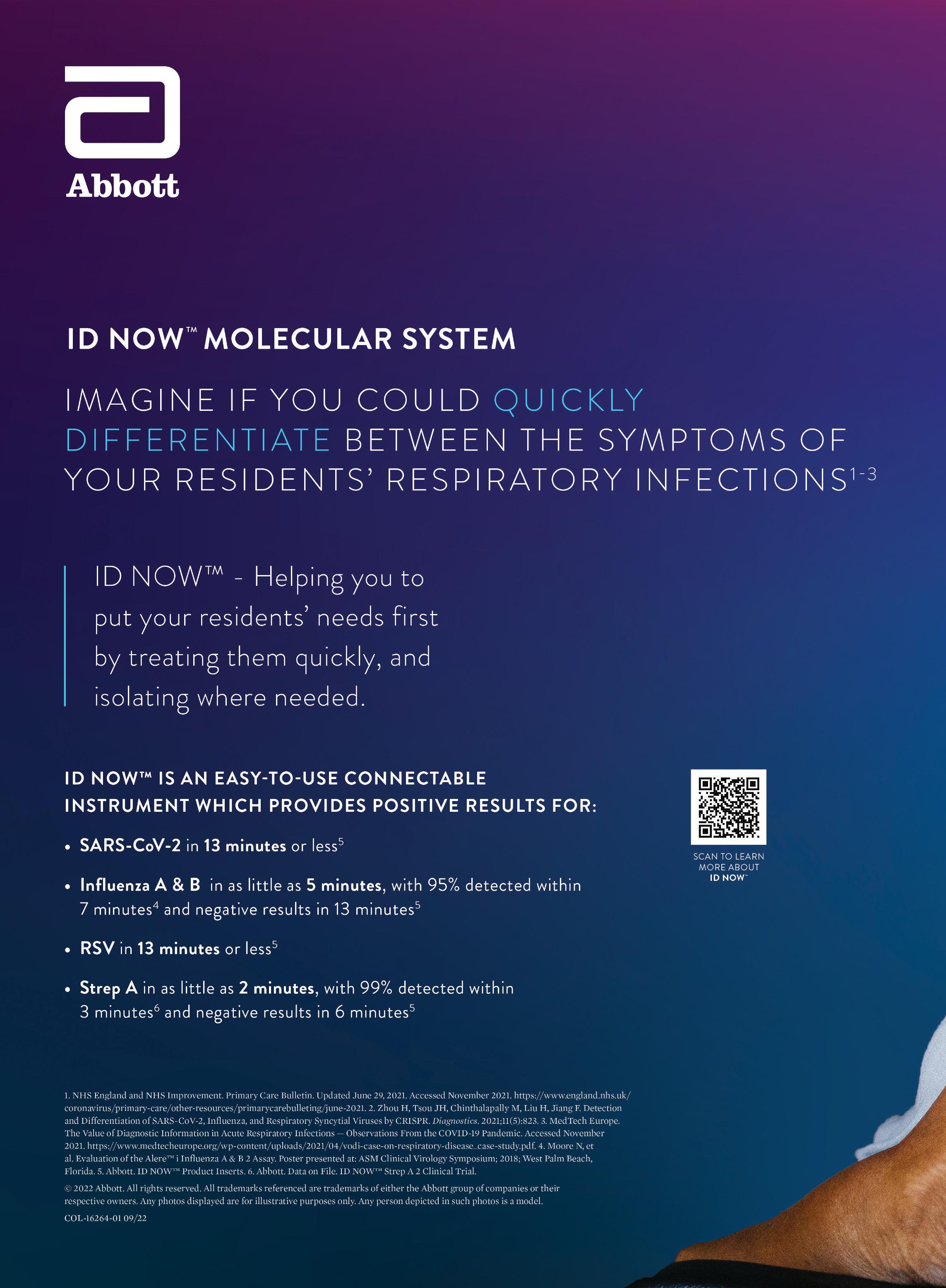
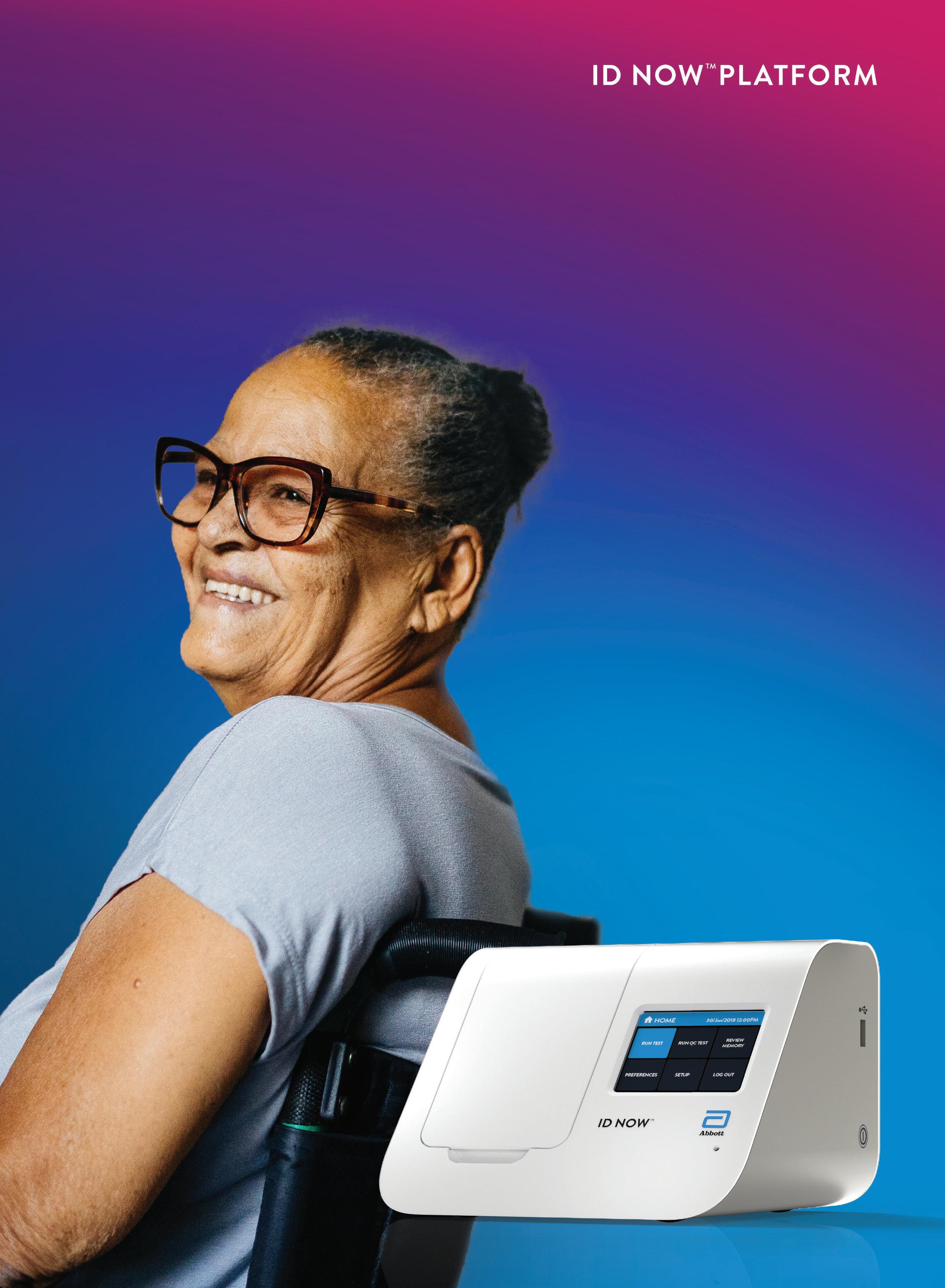

AND GENERAL WARDS
GOJO provides a straight ‘out of the box’ solution for hand hygiene, incorporating dis pensers products accessories and signage as well as training and on boarding support It also manages installations thereby reduc

 By
By
ing the staffing impact of changing suppli ers
• COMMUNITY & SOCIAL SERVICES:
These environments often have radically different needs from what are traditionally catered for in healthcare packages GOJO takes these specificities into consideration and offers specially adapted products for example locked dispenser units and foam sanitiser so they can only be opened by trained personnel in demanding environ ments
Its train the trainer programme allows
hygiene compliance is to ensure that the right products are available in the right places at the right time We are constantly innovating to keep people and places healthy This means formulating products that are not only effective at killing germs but that won’t irritate hands that must be repeatedly cleaned throughout a shift Ensuring that the products are available when and where they are needed be that personal bottles of hygienic hand rub or dispensers positioned in optimal locations And last but not least developing solutions with the environment in mind
“For example from 2023 we plan to move to RPT refills; all collapsible refills will be made from recycled materials as well as being recyclable ”
‘Widely used in the NHS, PURELL® is a trusted brand in healthcare facilities around the world Our solutions encompass fast active effective formulas that care for skin state of the art dispensers, and specialist support such as the Royal College of Nursing (RCN) accredited training making us the ideal healthcare partner
For a tailored effective, total solution for your setting or for more information on the benefits of partnering with GOJO please call +44 (0)1908 588444 email

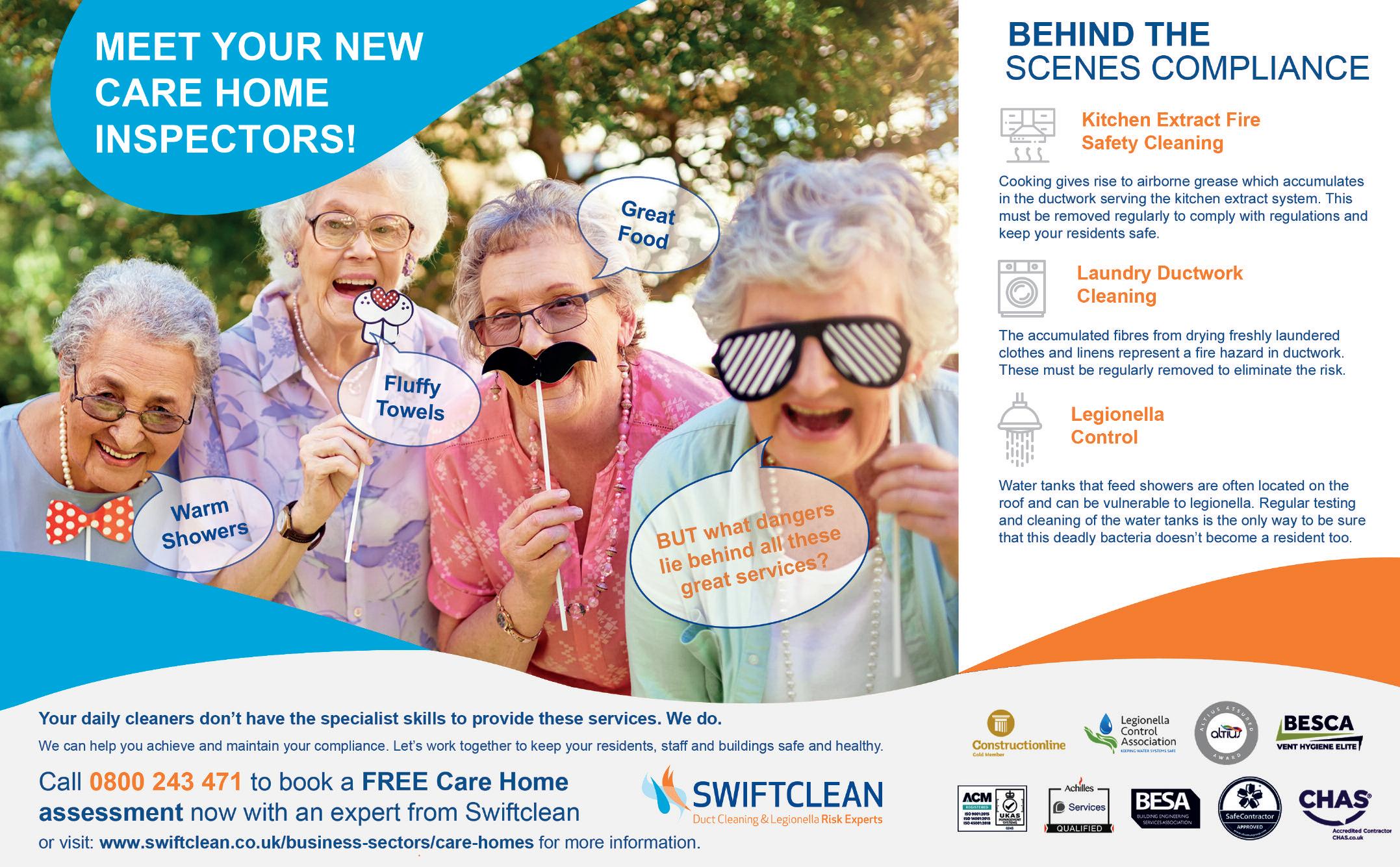



As
At
Current research shows that 20% of care home resi
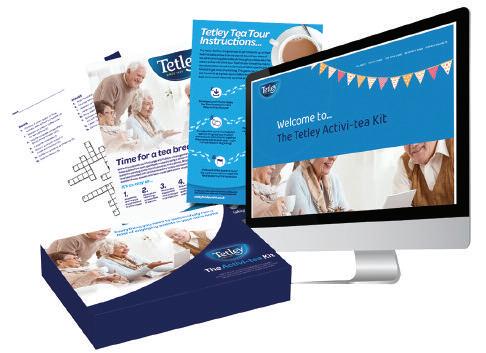
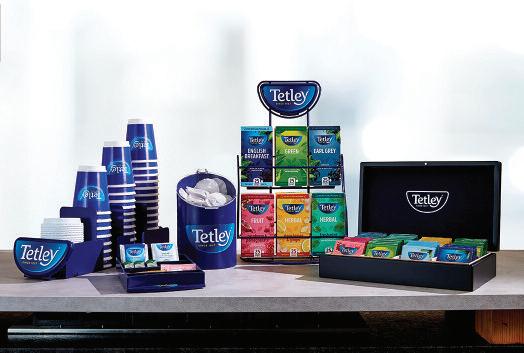
At It’s Made For You, we believe that everyone should look forward to tasty safe and nutritious texture modified meals The It s Made For You range is designed for the International Dysphagia Diet Standardisation Initiative (IDDSI) framework standards and includes valuable nutrition It s Made For You are proud to be Gold Sponsors of IDDSI
been


The autumn and winter months are a busy time for anyone in the care sector and it is important that all residents have a chance to enjoy warming nutritious food at every mealtime
Mary Wedge Business Development Manager at Anglia Crown com ments: “In our experience many of the residents look forward to the desserts They often represent familiar comfort foods and, even if they can not face the main course will often go straight for the pudding

Anglia Crown offer a wide range of hot and cold desserts that are ideal for a well balanced nutritional diet including choices that do not contain gluten Our Crown Choice and Advantage ranges include some fifty eight dishes, including our new, autumnal warming Ginger Chocolate Chip Sponge and delicious comforting custard that goes with almost any hot dessert

Our Crown Choice cold dessert includes the perennial favourites such as Chocolate Cake whilst our Crown Advantage range also offer reduced sugar desserts All individual Crown Advantage desserts come in packs of eighteen whilst the Crown Choice desserts come in packs of 3 and 6 allow ing accurate portioning and cutting down on any potential waste
Many of the Anglia Crown dishes can be teamed up with fresh fruit allow
ing for additional choice Items such as our Carrot Cake or Vanilla Cheesecake can be accompanied by whipped cream garnished with sea sonal fresh fruit
Our hot desserts are high in energy our hot portions of 170kcal and above provide energy and protein dense options and when served with custard provide over 250 kcal per serving Our cold desserts of 250 kcal and above also meet the energy guidelines in the British Dietetic Association (BDA) Nutrition and Hydration Digest (2017) requirements
VEGAN SUITABLE CHOICES




At Anglia Crown we pride ourselves with the array of vegetarian and gluten free dishes that we offer including an impressive range of desserts This was recognised with us being named at the Vegetarian Wholesaler of the Year 2022 at the VfL Awards for Excellence in Veg n Care Catering
All the Anglia Crown hot desserts are suitable for vegetarians Most of the Anglia Crown vegan products have been registered with the Vegan Society, including some thirteen of the dessert dishes ”
Anglia Crown are here to help take the strain out of your menus throughout the year Visit www angliacrown co uk for further details

bination of natural ingredients including ethanol men thol eucalyptus peppermint and MSM Reported ben efits of BIOFROST® Relief include lasting pain relief, improved joint movements comfort during sleep fewer cramps calmed nerve pain reduced joint and muscle discomfort and faster post activity recoveries

BIOFROST® Cold Therapy Gels are natural drug free topical cold therapy gels for muscular and joint pain chronic arthritic pain, post activity muscle ten sion general aches and overuse disorders Easy to use and fast acting, BIOFROST® Cold Therapy Gels relieve pain reduce inflammation and swelling without drugs and drug related side effects
Gels:
BIOFROST® Active is a dual action fast acting cold gel with heat sensation for effective relief of muscular and joint pain Containing 10 natural herbal extracts (i e Arnica Burdock Roman Chamomile Garlic Watercress Ivy White Nettle Pine Rosemary Menthol) BIOFROST® Active relieves chronic pain releases muscular tension loosens stiff joints and effectively treats back pain Benefits of BIOFROST® Active include easier joint movements, effective pain relief in treated areas discomfort free sleep fewer cramps and reduced post activity muscular and joint fatigue
BIOFROST® Cold Therapy Gels are usable stand alone or alongside other pain relieving therapies (i e medication, physiotherapy, etc ) BIOFROST® Cold Therapy Gels are suitable for people of any age including elderly and disabled people living independ ently or in nursing care

BIOFROST®
Therapy
Fire Doors are an imperative part of fire safety and are consider ations of the design and maintenance of any building but especially residential Article 17 RRFSO states fire safety provisions (includes fire doors) must be main tained in a suitable condition order
If you are the Responsible Person it s imperative you appoint a competent person to assist in meeting your duties under the fire safety order to ensure fire safety measures including fire doors are kept in working order
Yeoman Shield’s Fire Door Services can help to take the guess work out of fire door maintenance by providing fire door inspections condition reports remedial work and fire door installation all carried out by FDIS and/or FIRAS accredited team members
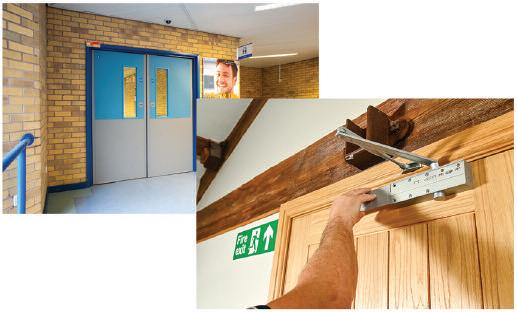
Having a good maintenance routine will dispel some needs of fire door replacement therefore being more cost effective
ation of Yeoman Shield Fire ction products can also be in the long term finan cially beneficial by halt ing impact damage from the start eliminating many repairs in the future and again will extend door lifecycles Installing Yeoman Shield door protection products such as door protection panels door edge protectors and PVCu glazing bead units will not affect the integrity of the fire door as all products have been tested in situ to the current standard required
Vulnerable frames and architraves can also be protected from impact with Yeoman Shield to pre vent dangerous splintering and splitting as well as abolishing the time consuming, repetitive need for repainting
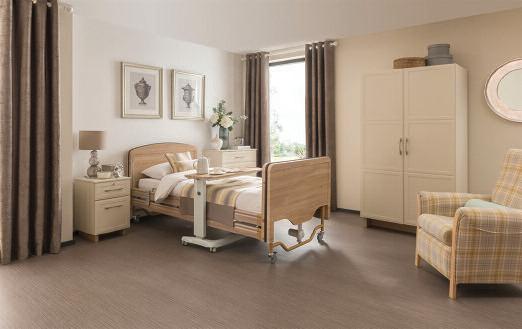
For a complete repair and protect service contact the team today frdp@yeomanshield com or visit www yeomanshield com or see the advert page 10
Care facilities typically exhibit significant but var ied hot water and heating usage patterns which con tributes to the current 40% tally of UK greenhouse gas emissions generated by the built environment
To help achieve climate neutral building stock by 2050 the industry is being challenged to reduce oper ational energy use over all other measures By increasing the use of renewable energy supply and prioritising on site renewable energy sources the hope it to reduce both carbon and bills

Sustainability comes with a cost Whether in the form of new build projects or and far more likely the refurbishment of existing yet ageing facilities under standing the necessary capital investment opera tional savings and payback periods is going to be key
Addressing the efficiency of domestic hot water (DHW) systems whether through the implementa
tion of heat pumps solar thermal direct electric water heating or even simple modernisation of exist ing gas appliances helps care facilities meet sus tainability goals in a practical and cost effective manner It also delivers improved year round condi tions for staff and clients in care providing access to spaces better suited to delivering medical care and assisted living

For buildings already on gas and that rely on large amounts of DHW a large proportion of current UK care and nursing home properties solar preheat is the preferable option For new build properties the expectation is for specification to default to a mixture of heat pumps and direct electric afterheat New sys tem approaches including prefabricated packaged plant rooms also provide for better use of the spaces that already exist without the need to undertake expensive and disruptive building projects This is especially valid as demands for beds continue to increase placing new demands on care facilities
Adveco can help achieve emission reduction tar gets With more than 50 years of specialised expert ise in designing, supplying, and servicing hot water systems to the nursing and care industry, Adveco is the single resource you need for independent expert technical guidance on choosing and developing bespoke sustainable applications today to get you on the right path towards net zero operation
Visit https://adveco co/sectors/healthcare/ or see the advert on page 15




Facing unprecedented energy costs and an increasingly pressing climate cri sis care home operators are all aiming to minimise energy consumption According to the Carbon Trust the care sector spends over £400 million on energy each year and after heating and lighting it is irrefutable that appliances are a main contributor to this figure For any care home, laundry is a key service area and one that is absolutely critical to maintaining infection control Thankfully, whereas you can’t turn down the heating in a care environment, or turn off the lighting there are ways in which you can significantly reduce the energy consumed by your laundry function Forbes Professional helps care home operators source the most energy water and user efficient laundry solu tions whilst advising on all relevant WRAS and industry requirements When choosing dryers, it is notable that care homes are increasingly turning away from gas appliances due to increasing running costs and safety concerns This is all the more notable now that changes to industry requirements are necessitating considerable investment in order for gas appliances to meet the current standards Forbes would generally recommend that electrical appliances should be the product of choice with heat pump dryers enabling astounding cost and energy savings Miele’s new heat pump commercial dryers are particu larly highly rated for their safety functionality and energy efficiency They employ a highly efficient and eco nomical filter system and heat exchanger to keep run times low and enable an energy saving of up to 60% when compared to vented dryers Additionally these heat pump dryers do not require any make up air
which enables the laundry function to be installed in the basement or in a cen tral location within the care home and saves on costly vent ducting Due to the effective interaction of the Miele filter system and the maintenance free heat exchanger fluff cannot clog the heat exchanger or adversely affect the excep tional drying efficiency
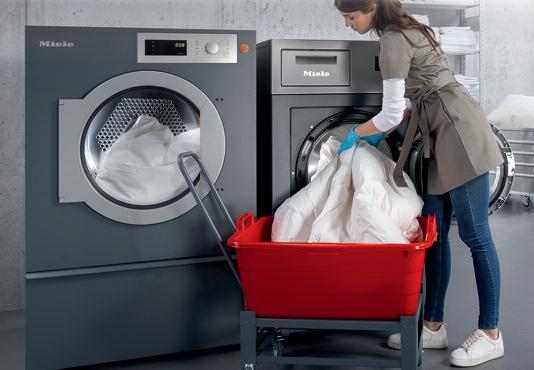
With regards to washing machines only a commercial washing machine will suffice in a care environment as only these machines will meet the WRAS requirements for Fluid Category 5 Forbes recommends using Miele commer cial washing machines as they are highly energy and water efficient whilst delivering both thermal and sluice disinfection As an illustrative example based on an electricity cost of £0 34/kWh and three machines being used four times/ day for five years, Miele machines can realise a running cost saving of £9 529 when compared to another industry brand
Auto dosing equipment also provides a great solution for ensuring that the right amount of detergent is dispensed for each cycle; minimising waste optimising the wash cycle and sav ing both money and time Forbes Professional provides a range of options for commercial laundry equipment including auto dosing equipment as well as Miele commercial laundry machines All of their products are available on a purchase rental or lease basis, with access to a comprehensive service that includes installation, commissioning, user training and a multi award winning repair and maintenance response
market activity Our industry leading eCommerce system is designed to reduce cost improve effi ciency and streamline supply chain management and will fully protect the integrity and accuracy of critical business data The order entry process is very simple meaning suppliers and vendors can spend their valuable time on tasks other than ordering apparel labelling
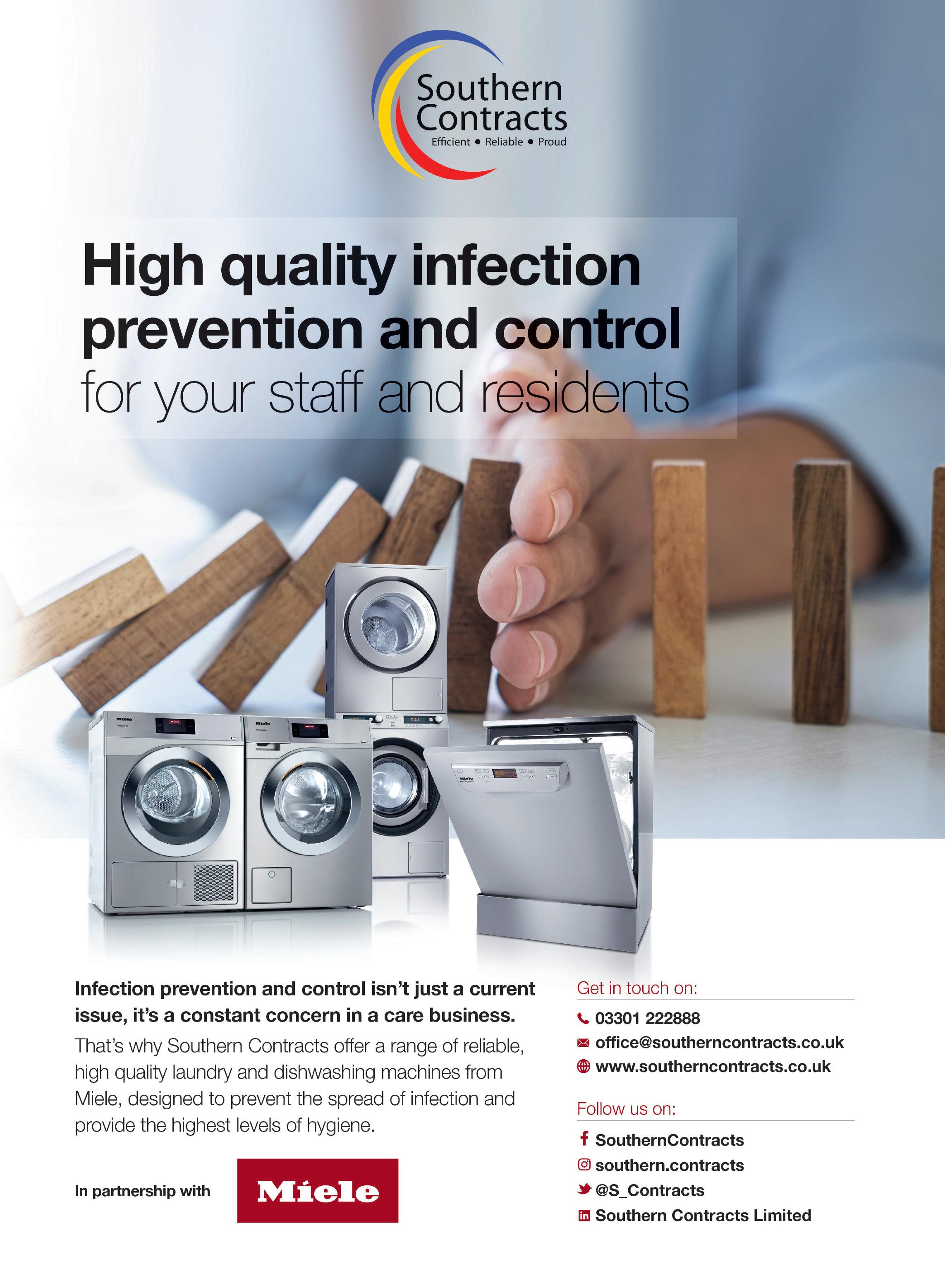

We stand at a crossroads for the future of care The sector has been in the spotlight much over the last few years, and not often for positive reasons Social care has become an increasingly political subject, and there is much discussion around the sector, pertaining to Covid rules, funding staffing levels and its uncertain future
One certainty is that our peo
ple are our most important asset It is they who set the tone and direction of the industry and are the beating pulse of its workings However they have seen great challenges over the past 2 years and as a result we need to look to new ways to protect support and empower them
As we look at the next 5 and 10 years for the industry we should look to face the problems of the sector head on Whilst funding and policy are integral parts of the solution we must also look to generate solutions from within the industry itself Increasingly technology has become an accessi ble and widespread tool in care and something that should be embraced
as part of care s future 1
Over the past few years, staff across the industry have provided out standing care amidst highly challenging circumstances However as demand for care increases the pressure on staff does too We need to look to means to support staff in their work and to enable them to focus on delivering hands on high quality human care
New technology can allow for remote monitoring analysis and diagno sis of key needs Audible cues can detect signs and symptoms of a possi ble fall and mattress management technology can pick up possible incontinence AI enabled ‘pain check’ facial analysis can assist in analysing patient condition and comfort These tools can help ease the workload of staff and provide them with digestible and accessible real time information, allowing them to focus on what matters most
The safety of our patients must be paramount and technology is cer tainly a great tool to aid that Electronic patient care records are becoming more commonplace in healthcare settings and should be embraced in care settings too Software can monitor medication dosing help track a patient’s condition over time and flag things requiring immediate atten tion Digitally enabled mattresses can detect and alert to changes in phys iology, such as abnormal vital signs These technologies can also allow for better continuation of care, throughout the care pathways, ensuring that a patient is not a nameless folded sheet of paper but instead a holistic indi
Care technologies have advanced at an amazing rate over the past decade The digital age is a place where we all live and all use tech nology as a familiar part of our daily lives At Medpage we have har nessed these advancing technolo gies into products to support Social Care and Independent Living Medpage brand products are designed to provide affordable, user friendly, care support products for domestic and professional care
Our new wristband activated door egress alarm is a perfect example of how advanced technologies are transformed into a system to safe guard people prone to wandering Simple to install suitable for single or multiple residents the system allows residents to remain mobile while providing an alert to carers if they attempt to leave the building through a monitored door Further details available at www easylinkuk co uk search Doorwatcher
Medpage have supplied Care
Residential Homes and Hospitals with fall prevention and detection alarms for more than 25 years From basic bed and chair exit detection alarms to more complex cordless sensor pad systems with nurse call integration we supply quality sys tems that deliver cost effective per formance
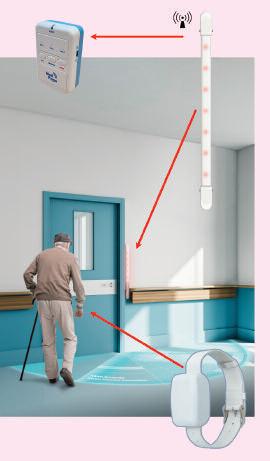
Our new sensor pad controller the MPCSA11 has been included into numerous falls management proj ects, in Hospitals and professional care establishments The system, already proven to reduce care costs, allows a patient with mobility to transfer from their bed to their chair or to visit their washroom without alarm notifications to carers providing the transfer is completed within a selectable time Failure to return within the selected time will result in alarm notification to carers either by pager nurse call trigger or ward wall mounted alarm receiver
vidual with records to match
Care needs are becoming both more complex and more understood Technology can and has enabled a breadth of new therapies for some of the more complex conditions For those suffering with dementia it has unlocked a new realm of possibility in memory care such as the use of virtual reality sensory enhancement chambers and movement/motion therapy chairs
Arguably dignity is one of the most important and most overlooked aspects in developing the future of the care industry Dignity in care goes beyond how we direct interactions with patients but must be at the core of their experience through every aspect of their day to day Technology when used correctly is a greater enabler of a proud holistic patient care experience Direct care alarms linking individual residents to portable devices held by staff can make alerts discreet Applications can keep fam ily members abreast of a resident s routine and day from afar Medication can be dispensed personally, and in privacy All these developments allow patients to reclaim their sense of person and to have their care be a sub tle addition as opposed to an overt fact
Times are changing and we as a sector must change with them Care has sat in the shadows for too and it is time with the help of the blossom ing care technology field to bring it to the light

Fall Savers® are an experienced market leading healthcare provider of resident safety solutions for over 15 years
FALL SAVERS ® WIRELESS MONITOR

Eliminate all cables with our new generation falls management solutions!
Upgrade your falls programme with the latest tech nology from Fall Savers® The NEW Fall Savers® Wireless eliminates the cord between the monitor and sensor pad This results in less work for nursing staff improved safety for patients and reduced wear and tear on sensor pads Wireless advantages include the ability to use one monitor with two sensor pads simul taneously and support for many new wireless devices
Benefits include:
Safer for pat ents less work for staff
Bed and cha r pads available
One monitor works with two sen sor pads
Integrates with most nurse call systems
A variety of opt ons ncluding Call button Pager
Floor sensor mat Wireless door/window exit alerts
TREADNOUGHT ®FLOOR
The TreadNought® Floor Sensor Pad is built to last with a durable construction that far out lasts the competition Our anti bacterial floor sensor pad is compatible with most nurse call systems or can be used with a portable pager to sound an alert when a person steps on to the sensor pad Caregivers typically place the sensor pad at the bedside in a doorway or other locations to monitor persons at risk for falls or wandering An optional anti slip mesh reduces the potential for slippage on hard surface floors
Features include:

Connects directly to most nurse call systems
H gh Quality anti bacter al Floor Sensor Pad
Large Size Pad: Measures (L) 91cm x (H) 61cm Opt ons (sold separately) Ant slip mesh for hard surface floors
See the advert on this page for further details or visit www fallsavers co uk
Quiet and calm care homes ensure that resi dents are able to live in a more relaxing and pleasant home environment Similarly carers and staff find that they too benefit from reduced stress when working in a home where noise levels are kept to a minimum There are many environmental factors that can affect those sensitive to their surround ings particularly those suffering from dementia these can be fluctua tions in ambient temperature light and of course noise Repetitive and high levels of noise can originate from a number of internal and exter nal sources for example telephones ringing loud conversations in cor ridors and call bells sounding, often one of the largest contributors to increasing the levels of stress and discomfort in residents
A published study by the University of Stirling stated that unan swered Nurse Call (Call Bell) alarms can be one of the most common causes of stress in dementia sufferers The University recommends “fit ting call alarms which alert nurses but do not resonate throughout the whole building Alarms can be particularly disconcerting as they may encourage the person with dementia to respond or investigate what the matter is At the very least the loss of sleep will compromise a per
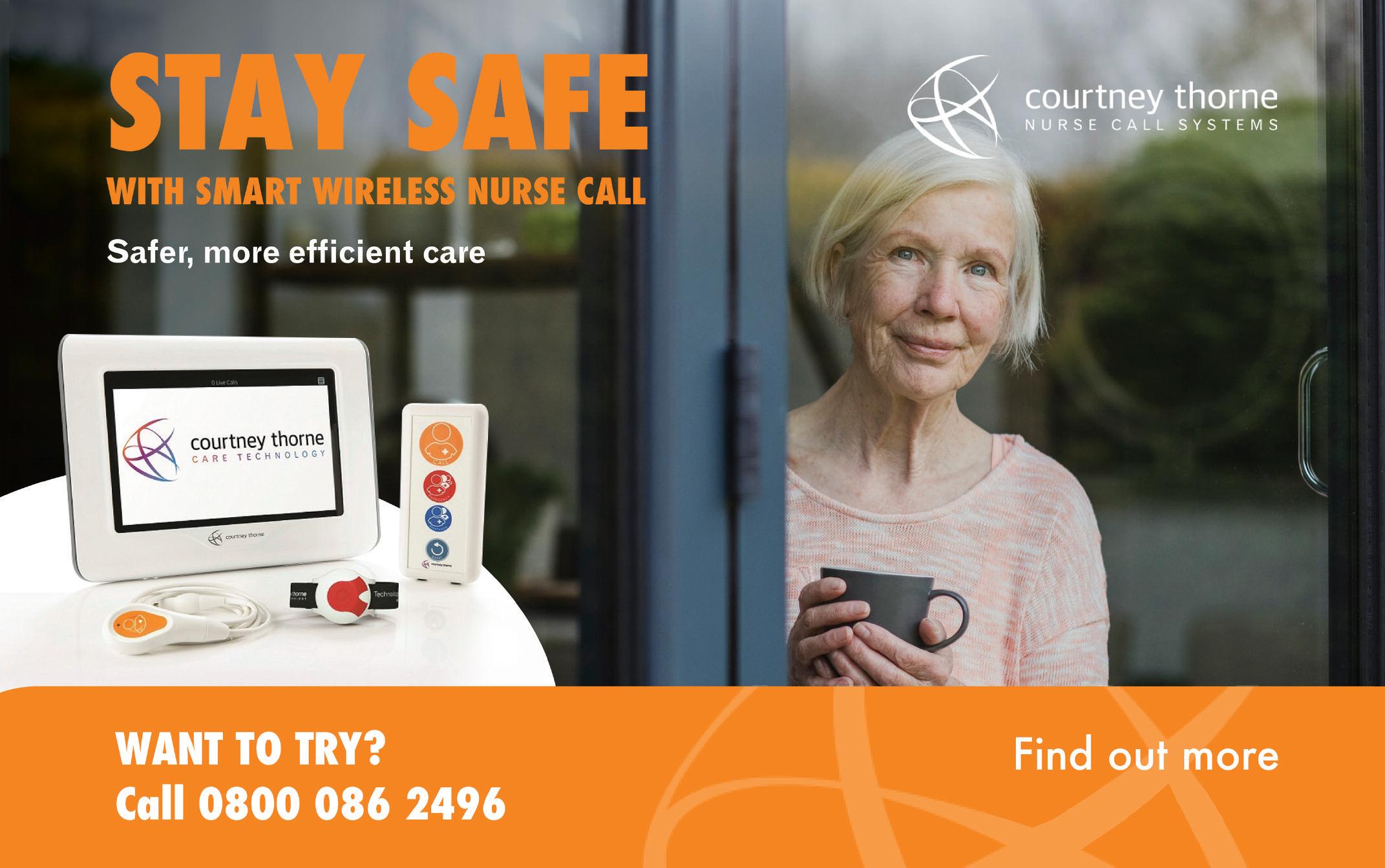
son’s ability to concentrate It can affect their attention levels and capacity to cope as well as being detrimental to their overall state of wellbeing Personal paging systems are preferable to bells and buzzers Modern Nurse Call systems can incorporate a number of methods to reduce their impact in a care home These include zoning whereby there are separate alarm types used depending upon the location of the call In these circumstances dementia suffer ers and those vulnerable to noise can be located in one zone whist less vulnerable residents live in an alternative “zone” Each “zone” can operate different call tones warning lights or other methods to alert when help is required
Reducing noise levels is essential to create a tranquil envi ronment for residents Pagers have been around for many years are a relatively simple and cost effective measure in reducing the levels of noise, and can be added to most Nurse Call systems Smart Mobile Devices are now becoming more commonplace for care home staff and hold a variety of apps for care planning e medication etc Many Courtney Thorne clients are now utilising the “Go” app with their Nurse Call sys tem With the “Go” app nurse call alarms are delivered imme diately and silently straight to the handsets alerting the individual carers to all Nurse call alarms without creating any general alarm sound and rarely disturbing the rest of the resi dents in the home
Calmer residents ultimately means that staff are less
stressed also this creates a happier workplace where
is greatly improved staff are retained and CQC ratings
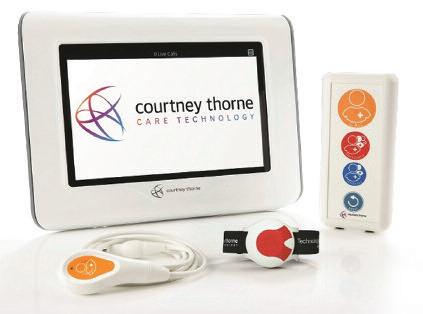

www.nursecallsystems.co.uk
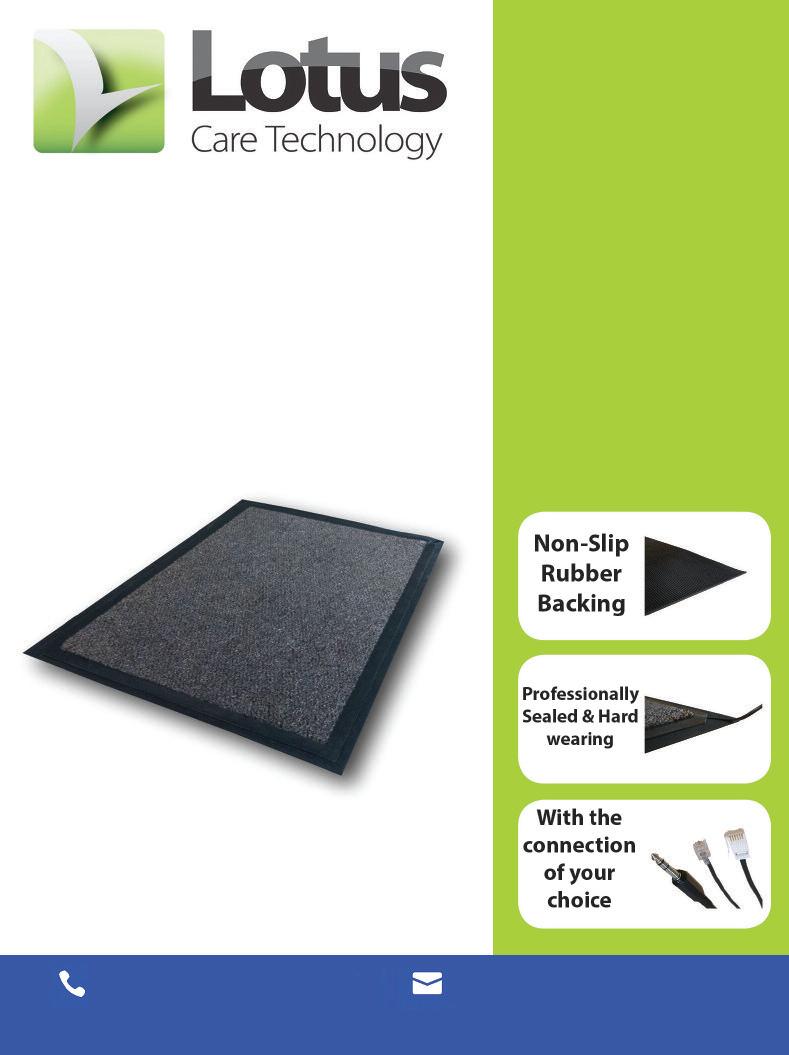
The UK is embracing a new era of data driven social care reform Digitisation and datafication are enabling enhanced visibility, unlocking a new paradigm of proactive person centred care How is data enabling this transformation what are the stumbling blocks and what strategies are necessary to create a new digital roadmap that leads to better outcomes?
Stuart Barclay, UK sales director of fall detection and remote monitoring supplier Vayyar Care recently chaired a live roundtable discussion with key players in the social care sector to explore the power and potential of technology enabled care


Four of the field’s leading providers and thought leaders explored the key factors driv ing change in social care The conversation brought together Alyson Scurfield, CEO at TSA, Paul Berney, CMO at Anthropos, Claire Aldridge, Strategic Contract Manager at Millbrook Healthcare Group and Tim Barclay CEO at Appello to share their visions for the future and how they are leverag ing data to truly transform care
STUART BARCLAY:
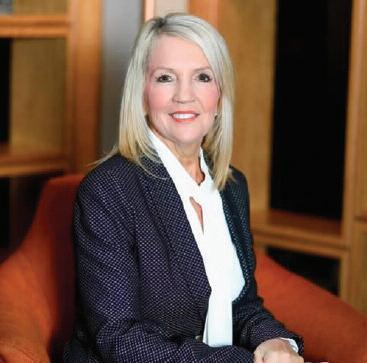
Thank you all for being here Alyson, can you tell us about the need, demand and market readiness for data driven social care and digital transformation?
ALYSON SCURFIELD, TSA CEO:
First I d like to thank Vayyar Care for bringing us together for this important discussion I’m delighted to be here
As part of the advisory body for technology enabled care in the UK I’m passionate about the power of data to transform care, enhance lives and deliver better outcomes for people and communities Using data to provide better care is at the heart of what we do at TSA We’ve been talking about this since early 2019 pre COVID and identified three cornerstones data people, and partnerships as the key drivers of transformation to enable true preventative care We ve had a bird s eye view of the process of change that’s impacting services and communities across the UK
We learned that we’re data rich but intelligence poor We need to give people relevant data insights that they can use to make more informed decisions and carry out better care planning not only for family members and frontline workers, but also to allow care recipients themselves to play an active role in managing their own self care Technology is delivering better outcomes for people It’s the glue of transformation and we’re starting to prove it
Data can drive better outcomes, enabling people to live longer inde pendently in the place of their choosing The scene is set for true health and social care reform
Let s talk about the journey from analogue to digital How are reac tive legacy solutions and devices falling short when it comes to falls management?
We recently conducted a survey of social care providers that identi fied falls management as the primary drain on resources 69% of respondents said that falls are the most common reason for responder visits But more than a quarter of those callouts turn out to be false alarms putting a huge strain on staff
A big part of the problem is that the vast majority of fall detection solutions on the market aren t practical Take cameras for example Most care users do not feel comfortable with video cameras invading their privacy at home
In the past caregivers had to deal with so many false alarms espe cially when it comes to fall detection Reactive legacy solutions like buttons and cords are useful only if they re within reach and the resi
dent is conscious mats are often unreliable and break frequently and wearables have to be charged, while the care user must remember to put them on
At Millbrook we ve recognised that historically the sector hasn t been using data as smartly as we could and that’s something we’re keen to address That s why we re partnering with companies like Vayyar and Anthropos, who share our vision, so that we can start lever aging data to get the best outcomes for our service users and help them feel secure about using the technology
We ve adopted a digital first approach meaning that we re phasing out all analogue devices Our goal is to start leveraging data to get the best outcomes for our service users
We want to capture the full benefits of technology to overcome the problem of false alarms and use it to predict and prevent crises
It s an exciting time right now and there s plenty of new tech coming on board We want to be sure that Millbrook is at the forefront of change and innovation in the sector
False alarms have made people weary and wary of technology that wastes valuable time and resources With all new technologies we need to give people confidence that they meet rigorous standards and have fully proven themselves
TIM
The transition from analogue to digital has been going on for the past seven years One of the good that the TSA and the industry s momentum have helped us to understand is that this isn’t just about replacing a device that signals analogue with a device that signals digi tal It s an opportunity for a step change to business models service models, and the outcomes you deliver because there is so much more power and capability in a digital environment We have more digitally connected customers than anyone out there and proven solutions to choose from We ve put digital infrastructure into more than 25 000 apartments and scores of case studies of people who were considering the journey and now have accessed proven innovative solutions
We ve gone out of our way to make ensure that we are as interoper able as possible We have transition models both commercial and technical to help the transition from analogue to digital We re not just moving from one box to another that would be missing the point The transition to digital can deliver services in a more effective person alised, and meaningful way for the end user, and that doesn’t mean at a higher cost You can deliver better services at a lower cost through more intelligent use of the digital capabilities that technology enabled care has to offer
Our survey also revealed that 90% of service providers acknowledge that frontline staff are spending too much time on administrative tasks More data should really mean less paperwork for staff What s more 88% of providers agree that more data about how long users spend at home and their activity would help deliver more personalised care And that leads to our next topic: outcomes How can we use data smartly to reduce the burden on overworked caregivers and ensure bet ter care?
It s worth contextualizing the word data It s not reams of information that need to be analysed It’s data delivered simply and sensibly Data is machine driven pieces of insight that can be easily shared in a digital form

We must be able to deliver single nuggets of information that care providers can act on
Simple messages like “I m OK”, clearly delivered on a dashboard, can make an enormous difference to the productivity of frontline staff
It’s the job of the connected care platforms like Anthropos and oth ers to process manage and analyse the data Ultimately care providers are only interested in the intelligence that will allow them to make better informed care decisions
They re only interested in the end product the insights That’s our job and we do it best when we know the desired care outcomes Then we know what insights we need to identify We take the data and divide it into four basic categories: environment daily routine and behaviour patterns physiological wellbeing and safety and security Then we take all that data and turn it into intelligence But we can only do that when we know what the goals are what insights we need to provide and what actions are required When you have a platform can reveal behavioural changes you can step in and take preventative
action Then you can make a real difference to someone s life no mat ter stage of the care journey they’re at
STUART:
You touched there on the importance of the joined up care journey Ultimately, it s collaboration that enables the delivery of person cen tred predictive care According to our survey almost 80% of service providers agreed that sharing behavioural data is critical to unlocking personalised outcomes We need to change the norm so that we can start working together cohesively as suppliers to support service providers in collaboration with TSA But let’s get more specific
What insights have been unlocked by the behavioural data you gath er and how do you share them with key stakeholders?
PAUL:
We re good at integration and that s because we understand the importance of working together I’ll give you an example We got an alert that showed that a resident hadn t started her morning routine within half hour of her regular pattern, and then the data revealed she had been up several times to go to the bathroom This is a person with long history of UTIs so the platform could identify this wasn’t the norm for her and sent an alert It s then up to the care provider to decide if it’s necessary to take action or just to keep an eye on them
STUART:
You re absolutely right Data sharing is the key to cohesive meaning ful and fruitful partnerships between technology suppliers platform providers and frontline caregivers Sharing behavioural data that reveals mobility physical and mental health and potential medical conditions is critical to unlocking personalised care and optimising out comes That applies both to overall care management and to the risk factors of falls
PAUL:
Exactly and that s why our customers want Vayyar Care Managing falls more effectively through better communication is at the top of our priority list when it comes to care management
Passive falls monitoring is so important because we all understand the drawbacks of wearables
We want to give people confidence that they re buying into a system that’s gone through exhaustive evaluation and testing, because if you re going to make a care decision based on data you need com plete confidence in the quality of that intelligence
ALYSON:
Achieving the best results through focused insights and intelligent data sharing is all about partnering with the right people Collaboration is paramount in terms of providing better outcomes We want to help people feel secure about using technology as a reliable resource and that s a team effort We re partnering with leading tech and platform providers like Vayyar Care and Anthropos who share our vision and want start to using smart tech much more wisely We need to guaran tee that our partners deliver the best quality adhere to the highest safety standards and like us, are committed to putting the service user at the heart of everything they do Above all we re committed to the quality standards framework which includes ethics and continuous quality of care
Come visit the TSA website We ll put you in touch with organisations that have loads of case studies to show how we’re making this possi ble We also have a list of certified members that we can guarantee are delivering this partnership approach and are delivering quality service
Well that brings us to the end of our roundtable on how data is transforming social care I d like to thank you all for being here and sharing your insights and experience As the social care sector expands, it’s clear that local authorities across the UK need to embrace new sensor technologies leading edge platforms and above all fresh best practices if they’re going to continue to put people at the heart of care
If you d like to discuss any of the issues raised in this roundtable or connect with any of the contributors please email Stuart Barclay directly:
stuart barclay@vayyar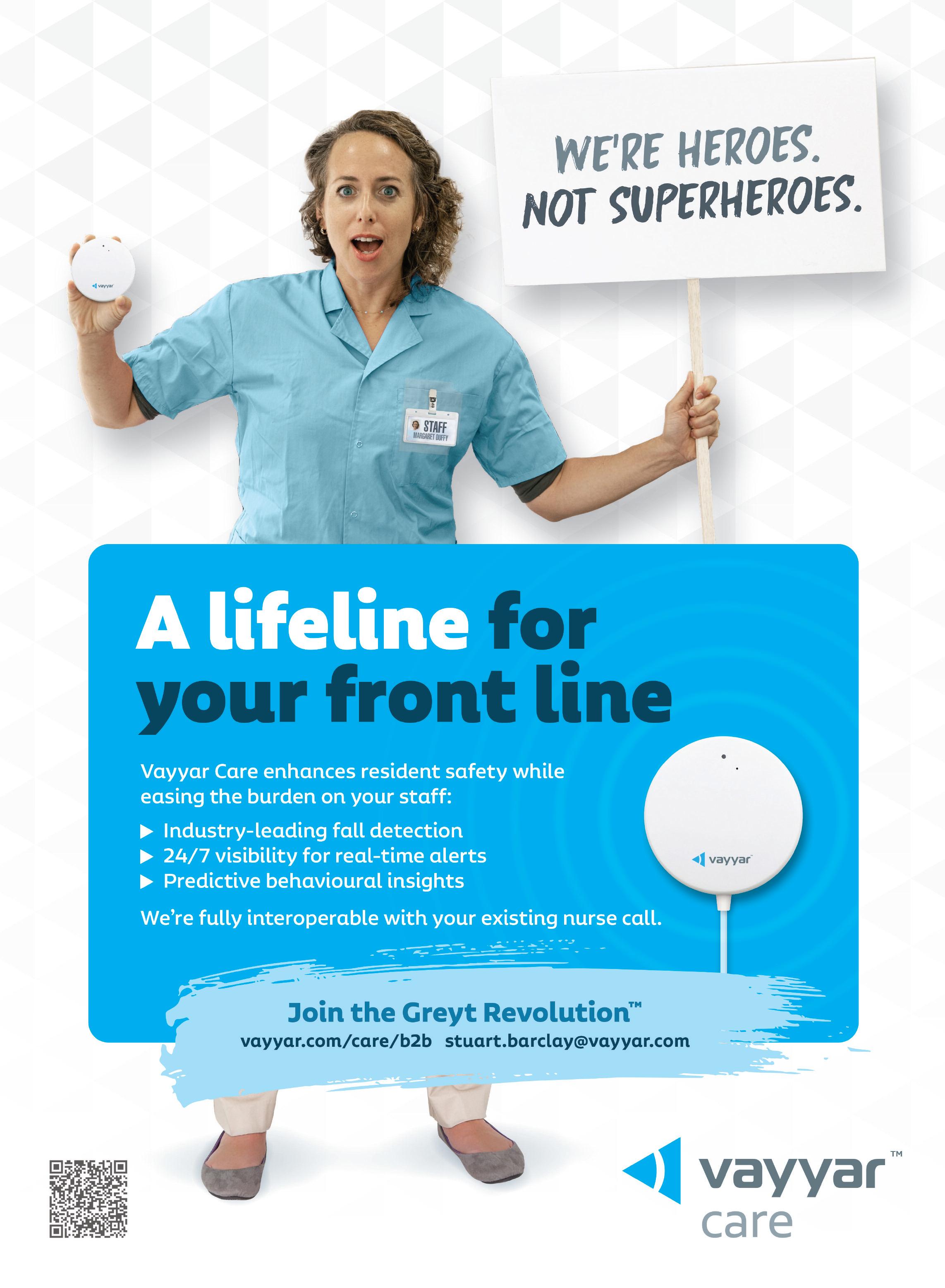
TIME
More time to care
Carers never have enough time to care but going digital can provide more
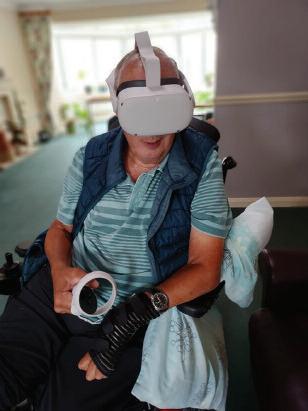
There are so many time consuming tasks such as writing care notes completing paper assessments fill ing in charts preparing handovers and countless other administrative tasks
Going digital can automate many of these tasks and enable recording care interactions in real time ensur ing nothing is left undocumented and saving time that can be better spent providing care
Digital care systems are safe and accessible main taining the security and confidentiality of your data
This is difficult to achieve with paper because sensitive information must be locked away when not in use per GDPR
Furthermore digital allows you to determine who can access and what via permission controls Staff only see what they need to see based on their role
Protect your business
Going digital makes it easy and efficient to evidence
the quality of care you provide In addition as a digital system has a complete audit trail you can be assured the information you are providing is accurate and com plete
COSTS
Costs and environment
The most considerable cost saving that going digital can provide is time While the amount of time saved will vary between service types and roles this alone makes going digital worthwhile
RISK
Using inbuilt alerts ensures that nothing is missed whether that s a care plan change or a fall report Using an eMAR will help reduce medication errors and ensure that the 6 Rs are always met
Going digital also allows the collection of data at the point of care which can be analysed to identify trends and risks and demonstrate corrective action
Improve staf f retention
Using electronic care systems to change the focus from the administration to the delivery of care helps
stage engage more with service users
Additionally providing smart tools like care planning and eMAR software to reduce the administrative bur den will decrease staff stress
Improved quality of care
With pre built assessments covering all aspects of health you can get to know your service users inti mately
But it s not just health; other characteristics such as emotion likes/dislikes and how they correspond to a wide range of activities can be recorded
Demonstrate quality of care deliver y
While the delivery of person centred care is para mount care providers must also provide evidence of the care they deliver and regulatory bodies actively encourage the use of technology
Digital care plans are the best way to achieve this!

VISIBILITY
Improved visibility
Electronic care systems ensure that managers have real time access to notes and information to instantly understand the care provided and help identify
changes that need to be made to improve the quality of care

AutumnCare con tains a customis able Dashboard to provide Managers with a snapshot of what is occurring across the care service at any point in time
WONDERING HOW TO GO DIGITAL?
AutumnCare provides specialist digital care planning and eMAR software enabling providers to migrate to a digital system and providing the foundations for out standing care We can walk you through what is required step by step as well as provide training and support every step of the way
To realise all of the benefits above plus many more get in touch with us today
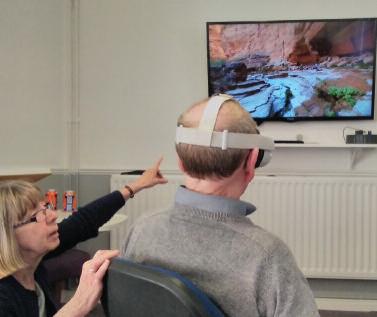
Contact Chris Sharman
Email c sharman@autumn care Call 0800 009 2121 Website uk autumn care
desire
Reminiscence therapy is proving to be particularly effective for people living with dementia and this is a fantastic example of how we can utilise modern technology to help them to unlock treasured memories and engage with others ” he further explains Advinia is one of the UK s largest care providers and has for some time now been engaging in groundbreaking technological advancements to provide the best care for residents With a vision to create a better every day life for its residents Advinia continues to explore the ever present opportunities that technology provides to make life for the elderly more enjoyable
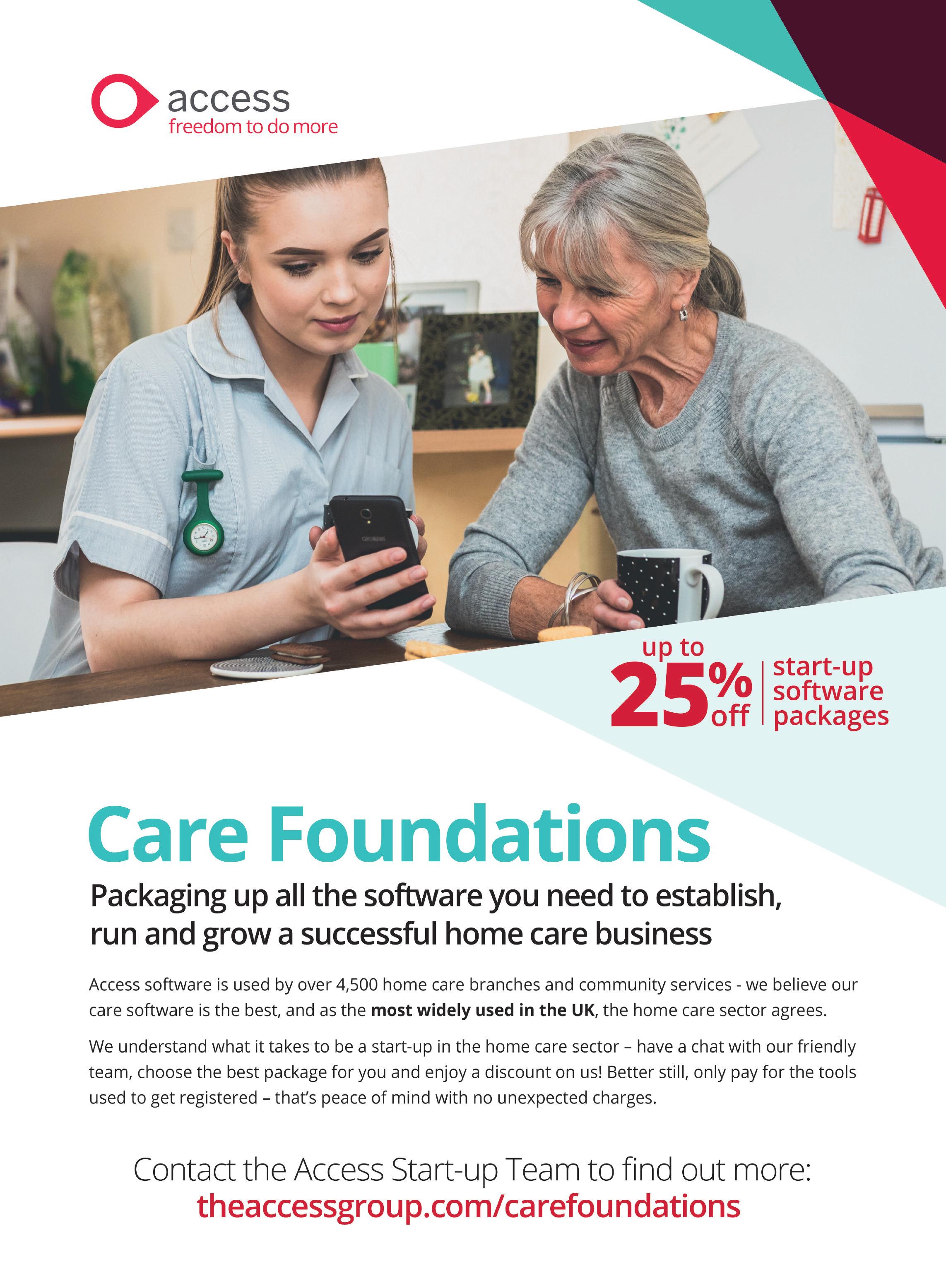

better time to get on board https://careis net
administration driven by ever increasing legislative compliance requirements and controls and pres surised by ever increasing costs The CAREAudits apps evolved from their desire to give something back to the Care Sector; to develop systems that genuinely reduce costs and increase efficiency as well as improving accountability and quality And above all a system that would be easy to install and use by every one
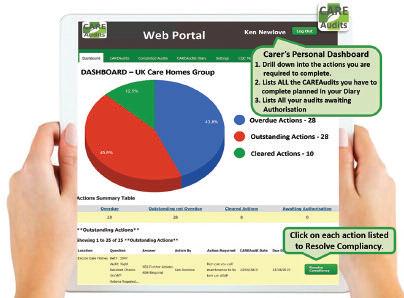
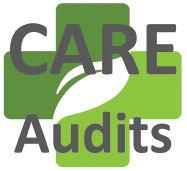
The CAREAudits app and Web Portal
now being used
are thousands of carers
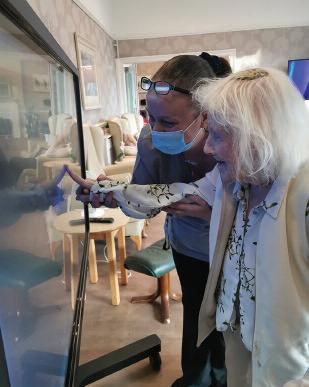
says “We were able to imple ment the system ourselves and are now benefitting from management having all the information we need at our fingertips in real time wherev er we are
The system allows care providers to audit or check just about everything and manage areas requiring actions (or non compliances) in it s Web Portal Encrypted date and time stamped evidence including photos is seamlessly auto attached and recorded in the system

Working in the Care Sector the team recognised in 2014 the sector was becoming overwhelmed with
Tool
from CQC Compliance and Safety to Medication Audits Training and Maintenance as well as service users quality and wellbeing and now Corona Virus Steve Smith regional manager at Care Homes UK
Natalie Lawrence at Yorkare Homes says It s a paperless system that runs alongside our existing client records system helping to make our whole operation paperless ” CAREAudits ensures manage ment and staff are aware at all times of what needs checking that it’s been checked actions required by whom by when including full resolution management Each CAREAudit also scores the answers so manage
ment can monitor improvement Steven Tegart from Talbot Group likes reporting and says “I wish all my other systems were as easy to extract data for management reports as the CAREAudits Excel links
The system has over 120 exam ple audits to select from CAREAudits apps are extremely easy to use and care providers can easily add or edit their own audits in minutes ensuring simple management of ever changing requirements App auditors can use CAREAudits with virtually no training it s that simple The Care Auditor s Hands Free Operation guides the user through each audit each question and answer with it’s own help text standard answers and standard actions required ensuring that the least skilled operative becomes the care provider’s expert Users can download the app for a free trial and be up and running with the full system in minutes
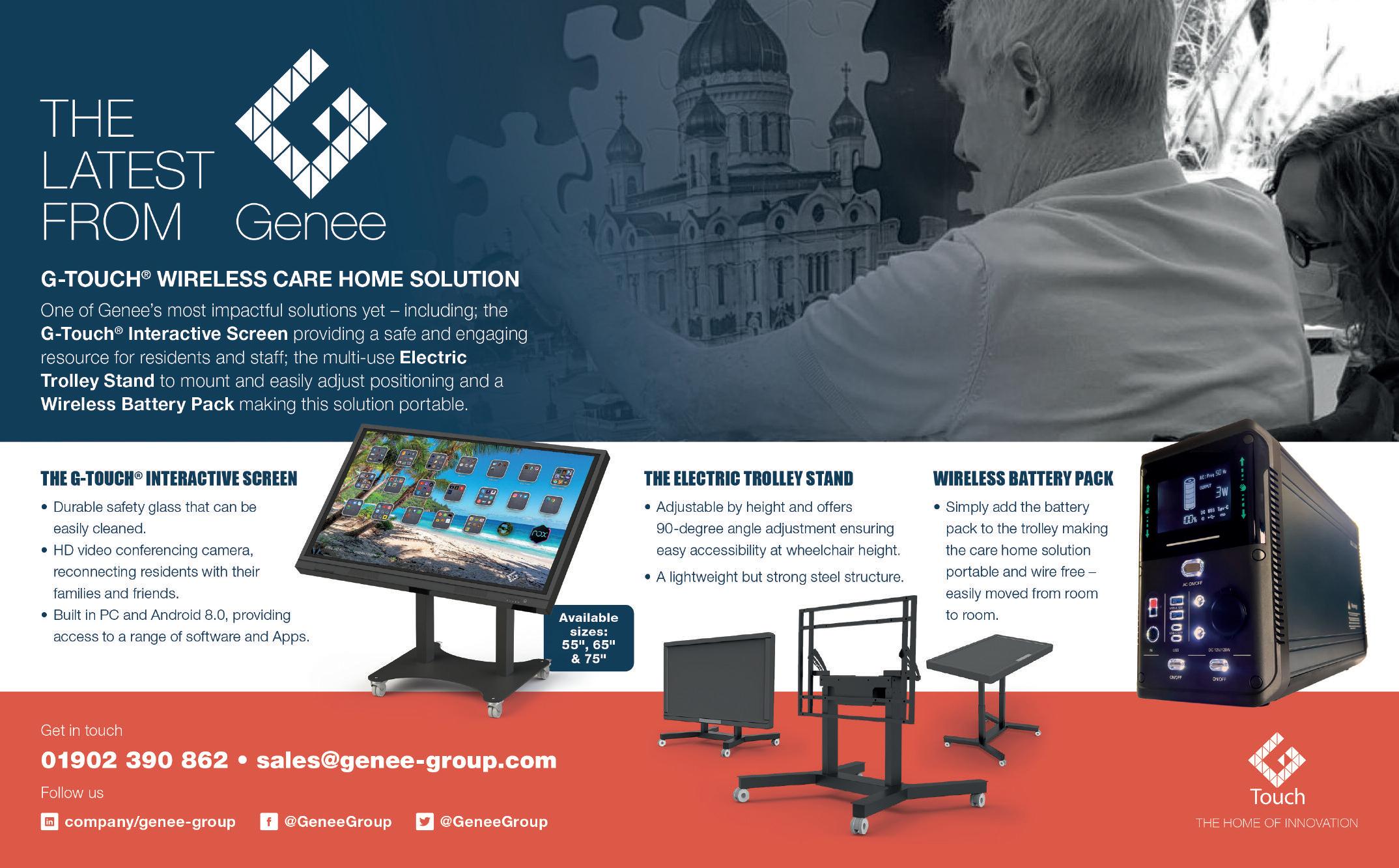
Please mention THE CARER when responding to advertising. Please mention THE CARER when responding to advertising.
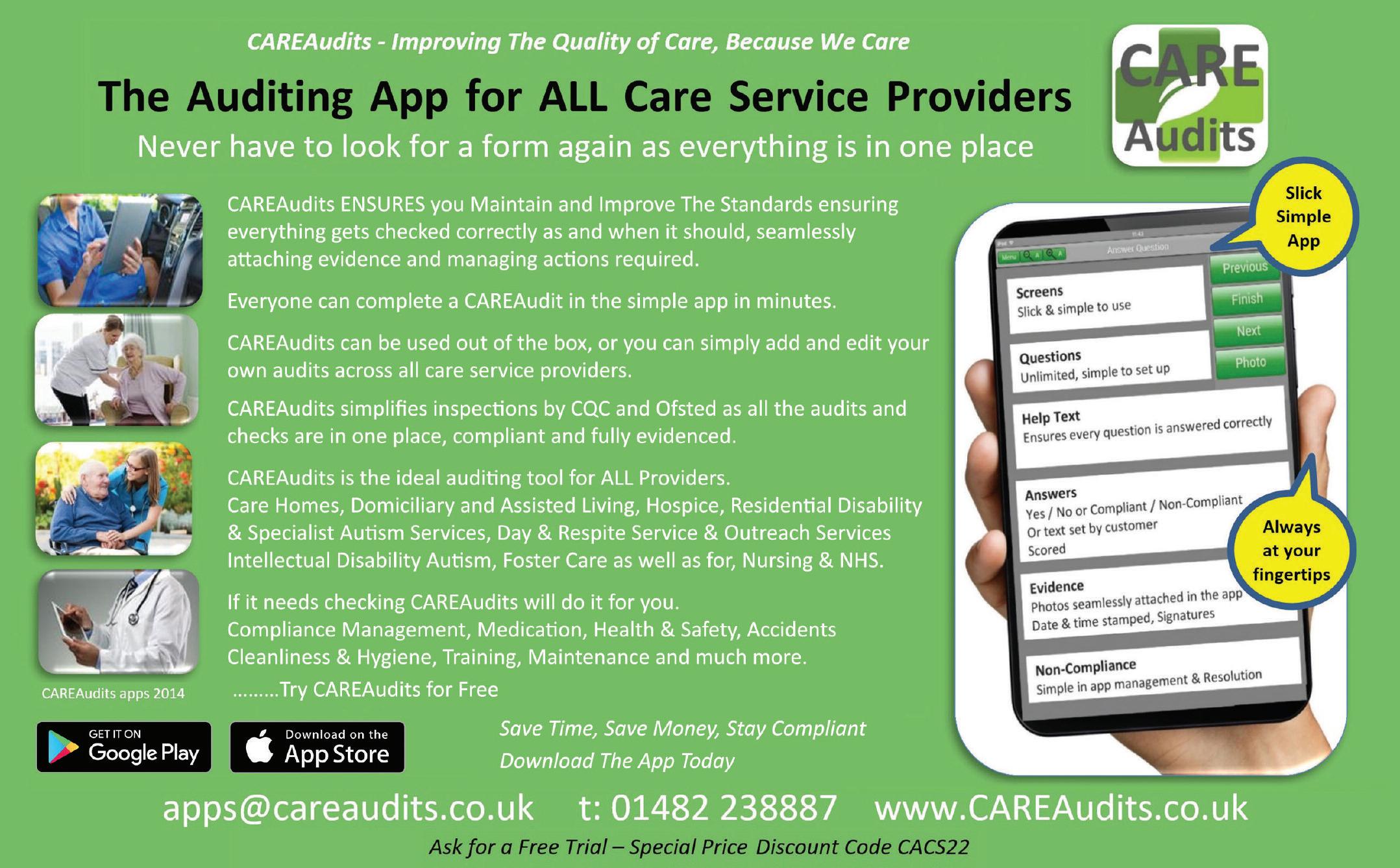
Specialist business property adviser Christie & Co has today launched its first Care Market Review 2022 report which analyses the transactional healthcare market in the UK: looking at buyer appetite transactional activity and investor demand local authority fee increas es and the funding landscape It also includes an operator survey which gives an insider view on occupancy and agency staff usage from some of healthcare’s leading operators
Christie & Co reports strong demand for care home opportunities throughout the UK with a 78 per cent increase in completions from 2020 to 2022 and deal numbers significantly ahead of pre pandemic levels This year offers sat at an average of 101 per cent of asking price underlining that strong investor appetite with competitive bidding is commonplace Christie & Co noted however that with the changing macro economic landscape the trend moving forward will be driven by a number of factors including the availability of capital and the alignment of vendors pricing expectations relative to prevailing market conditions


New instruction levels increased by around 30 per cent from 2020 to 2021 and they continue to grow as operators capitalise on the buoyant market conditions and strong values achieved
The company notes that its most active buyer type over the past five years has been independent operators with one or two homes which, on average transacted on 41 per cent of deals in the sector So far in 2022, corporate operators and investors have made up 33 per cent of deals while first time buyers made up just 7 per cent a fall of 9 per cent since 2018 which is reflective of the increasing funding challenges for first time buyers the regulatory burden of the CQC and the increase in quality, higher value stock on the market
Thanks to a competitive marketplace and the increased use of tech nology in care homes which can allow for some operational work to be conducted remotely buyers are increasingly looking further afield with almost half (48 per cent) of deals in 2022 concluded to buyers who live over 100 miles from their target business A large number of deals were concluded in and around urban centres yet there has been an increase in the number of care homes transacting in rural and coastal areas
HOMESOver 1 500 care homes ceased trading between 2015 and 2020 This was not solely linked to CQC ratings, as over 40 per cent of care home closures in 2020 had ‘Good’ ratings and were closed for a range of rea sons, including margins and cost pressures
A record 31 per cent of the care homes Christie & Co sold in 2021 were on a closed basis 56 per cent of these were sold for ongoing healthcare use whilst 26 per cent were sold for residential conversion The number of closed care homes sold dropped to just 13 per cent in 2022 however an increasing proportion (80 per cent) of these closed homes were sold to care home providers
When analysing local authority fee rate rises across the UK in the fis cal year 2022/23 Christie & Co found that fee increases fall short of inflationary cost pressures in the sector There was a large disparity between fee increases throughout the UK from 3 1 per cent to 12 8 per cent with an average residential fee increase in England of 5 4 per cent and nursing fees rising by 6 8 per cent Going forward the com pany expects the burden on the self funded client base to increase
OPERATOR
Christie & Co interviewed a cross section of local and regional
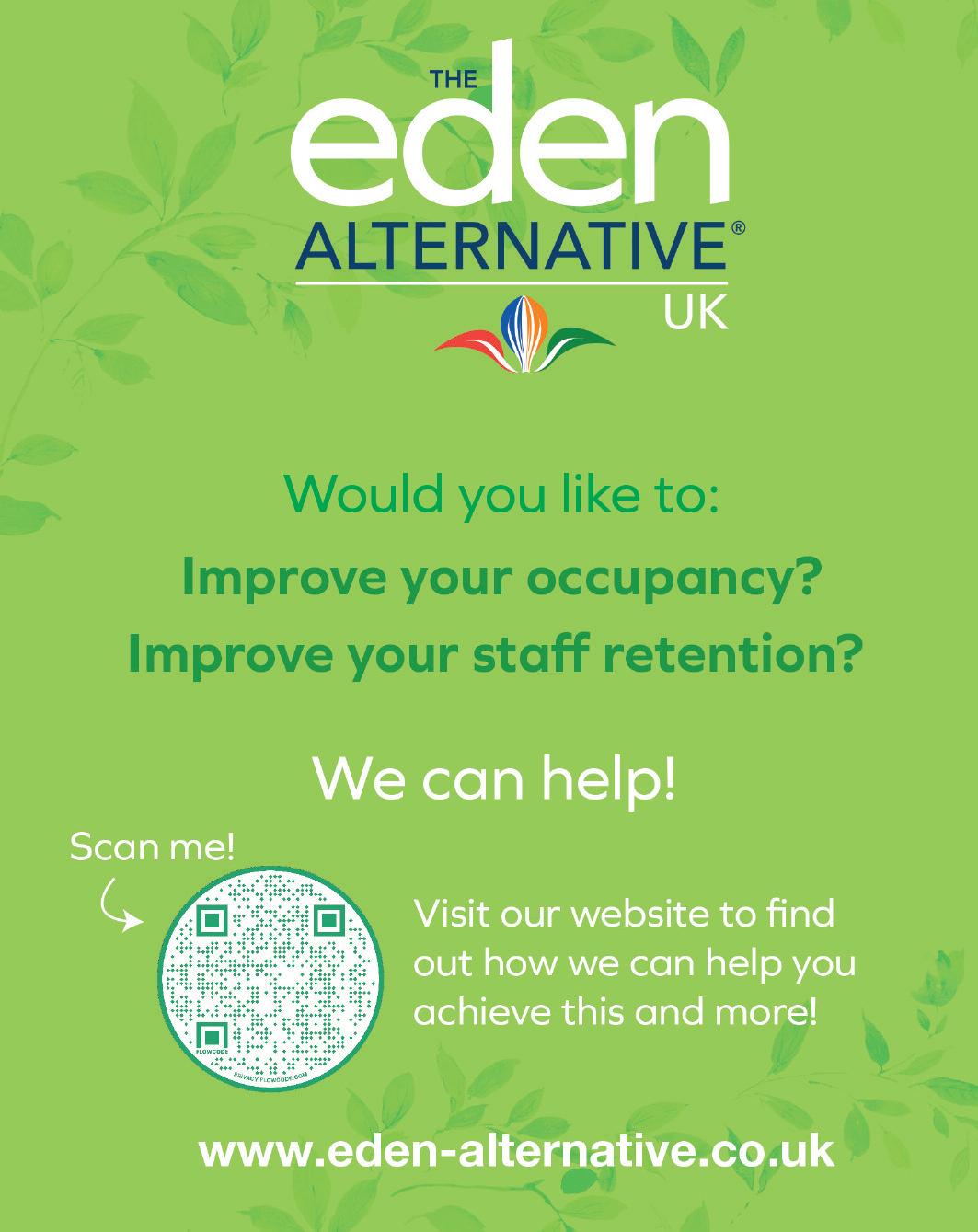
With resourcing placing a huge strain on care home operators 52 per cent of respondents said that they have a widespread use of agency staff Those that have obtained a sponsorship licence to recruit staff from abroad have been able to tap into new markets for their recruitment needs and this has been successful for many However with over half of providers still having to use agency staff to fill their rotas business costs are increasing further
While 43 per cent of operators said occupancy has returned to pre pandemic levels for 57 per cent occupancy is still recovering There is a wide variation in occupancy trends across the UK with many smaller regional operators saying that their homes are largely back to pre pan demic levels and larger providers generally reporting lower overall average occupancy rates Positively though the majority report good enquiry levels which suggests that occupancy rates will continue to re build during 2023
The report concludes with a look at the funding landscape written by commercial finance specialist Christie Finance which has seen 8 33 per cent fewer funded deals in the sector this year as operators look to their portfolios to expand or restructure existing debt The average loan size increased by 5 8 per cent, which suggests that funding in the sec tor is evolving to provide more refinance to buy or expand
First time buyers making offers on care businesses fell from 48 per cent in 2021 to 45 per cent in 2022 due to the perceived difficulties in raising finance This area of the market has been more challenging as the recognised lenders retrench to service existing operators with proven track records
Rob Kinsman Regional Director Care at Christie & Co comments “The last couple of years have presented the sector with huge opera tional challenges but it is heartening to see that investor appetite has fully recovered We have confidence that the entrepreneurial nature of the sector will ensure the transactional market continues to thrive despite the growing economic headwinds ”
To read the full report visit www christie com/news resources/publications/care market review 2022/
CLOSED CARE providers in the UK to gain insight into some of the operational chal lenges they re
Imagine a situation where you would have little or no worries about staff walking away and having a team that are very committed to your organisation
HOW IS THAT POSSIBLE?
By hiring overseas staff through the Sponsorship Licences Government Initiative (We can help you if you don’t have a Sponsorship Licence yet)
WHY WOULD THE STAFF BE COMMITTED AND LOYAL?
According to the legal arrangement of their visa (right to work in the UK) all these overseas staff are obligated to stay at your organisation for 3 5 years otherwise they lose their immigration status and are liable for deportation to their country of origin
This makes them committed and legally bound to stay and work with you
Someone might say this sounds too good to be true What happens if the staff is not happy? The reality of the matter is that a very small
percentage will not work out but that is where we come in
Firstly we preselect the staff that we feel will blend into the culture of your organisation Secondly we will supply you with the tips that ensures a better settlement procedure for overseas staff Finally we are at hand through the continual coaching and mentoring program to identify ‘sticky areas’ and work with you on getting a mutually benefi cial solutions
Purer Health Care Agency has been specially designed to help reduce the high staff turnover and its associated cost and disruptions as well as help overseas candidates obtain a better economically enhanced life This way we serve a business, social and economic pur pose
We have conducted a robust background screening conducting Criminal Checks Identity Checks Work Reference Checks and Family History Checks Hence all our staff have been prequalified and have
The Eden model is built on what people say they want in a Home or a workplace which therefore attracts residents and team members alike
As an Eden Home builds its reputation upon the quality of life it offers to the people that reside there it follows that occupancy improves
As a programme that empowers staff and focuses on their well being, It follows that staff retention improves
With a positive culture, a motivated and dedicated workforce, It follows that positive innovation becomes more possible sustain able and continuous
When demand for services increase it follows that viability improves
As a cohesive cultural progression programme it follows that innovation modernisation and positivity increase
The model is efficient cost effective and the training is deliv ered by experienced practitioners in Care Homes Homes are very busy places and the programme is therefore run on line for 1 hour per week for 6 weeks and people can do
this at work or at home
The 6 weekly sessions are run online with a workbook with links for further optional reading or viewing and should not be a burden to busy Homes teams and managers
It is however effective You can try without obligat on It is designed to make business sense to providers
It is designed to enhance viability
It is designed to support recruitment and retention It is designed to motivate Care teams and is open to any individ ual to add their CV

WHAT IS IT
It is a training programme which leads to accreditation and focuses in detail on 7 domains of wellbeing 10 principles and is particularly designed to address instances of loneliness helpless ness and boredom
Call today on 01626
